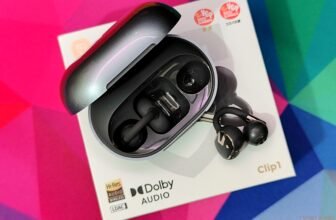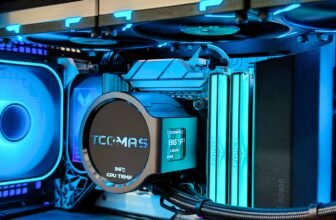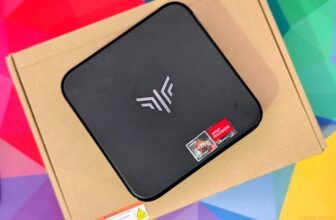When it comes to gaming smartphones, REDMAGIC has earned a strong reputation for combining powerful hardware with gamer-focused features. Known for its focus on speed, cooling efficiency, and performance stability, the brand continues to refine its formula with every new release.
Marking its seventh anniversary, REDMAGIC has expanded its lineup with a new series called AIR, introducing the REDMAGIC 10 AIR as the first in this range. Launched in April 2025, the REDMAGIC 10 AIR is aimed at users seeking a capable gaming phone that maintains a slim profile without cutting corners on performance. It brings together the essentials that mobile gamers look for—smooth visuals, responsive controls, and strong battery life—all in a refined body.
The smartphone features a 6.8-inch AMOLED display with 1116 x 2480 resolution and a 120 Hz refresh rate, delivering fluid gameplay and vivid colors. Powering the device is Qualcomm’s Snapdragon 8 Gen 3 platform, paired with 12 GB or 16 GB of RAM and 256 GB or 512 GB of internal storage. The phone also includes a 16 MP under-display front camera, dual 50 MP rear cameras.
The device also includes 5G, Wi-Fi 7, Bluetooth 5.4, NFC, and infrared, along with capacitive shoulder triggers for gaming precision. To keep it running through long sessions, REDMAGIC equipped the phone with a 6,000 mAh battery and 80W fast charging, while Android 15 with REDMAGIC OS 10 ensures smooth software performance. The brand has also focused on keeping the design lighter and more pocket-friendly, catering to both gaming and daily use.
As REDMAGIC’s latest flagship in the mid-to-premium gaming segment, the 10 AIR targets players who value power and practicality. To see how well it performs in real-world use, we tested its display, design, performance, thermals, camera output, and battery efficiency over several days. Here’s our full hands-on review of the REDMAGIC 10 AIR and how it performs across gaming and everyday scenarios.
REDMAGIC 10 AIR Specifications
| Category | Details |
|---|---|
| Launch Date | April 2025 |
| Body Dimensions | 164.3 x 76.6 x 7.85mm (6.47 x 3.02 x 0.31 in) |
| Display | 6.8-inch OLED, 1.5K resolution (2800 × 1260), 120 Hz refresh rate |
| Processor (Chipset) | Qualcomm Snapdragon 8 Gen 3 |
| GPU | Adreno 750 |
| RAM Options | 12 GB / 16 GB LPDDR5X |
| Storage Options | 256 GB / 512 GB UFS 4.0 |
| Operating System | Android 15 with REDMAGIC OS 10 |
| Rear Cameras | Dual: 50 MP (main) + 50 MP (ultra-wide) |
| Front Camera | 16 MP under-display camera |
| Connectivity | 5G, Wi-Fi 7, Bluetooth 5.4, NFC, Infrared |
| Audio | Stereo speakers, 3.5mm headphone jack, DTS:X Ultra support |
| Gaming Features | Capacitive shoulder triggers, Game Space mode, advanced cooling system |
| Battery Capacity | 6,000 mAh (dual-cell design) |
| Charging Speed | 80W wired fast charging (USB Type-C) |
| Cooling System | Multi-layer ICE cooling with a vapor chamber |
| Security | In-display fingerprint sensor, face unlock |
| Build Materials | Aluminum frame, glass back |
| Colors Available | Black Twilight, White Hailstone, and Orange Flare |
Unboxing
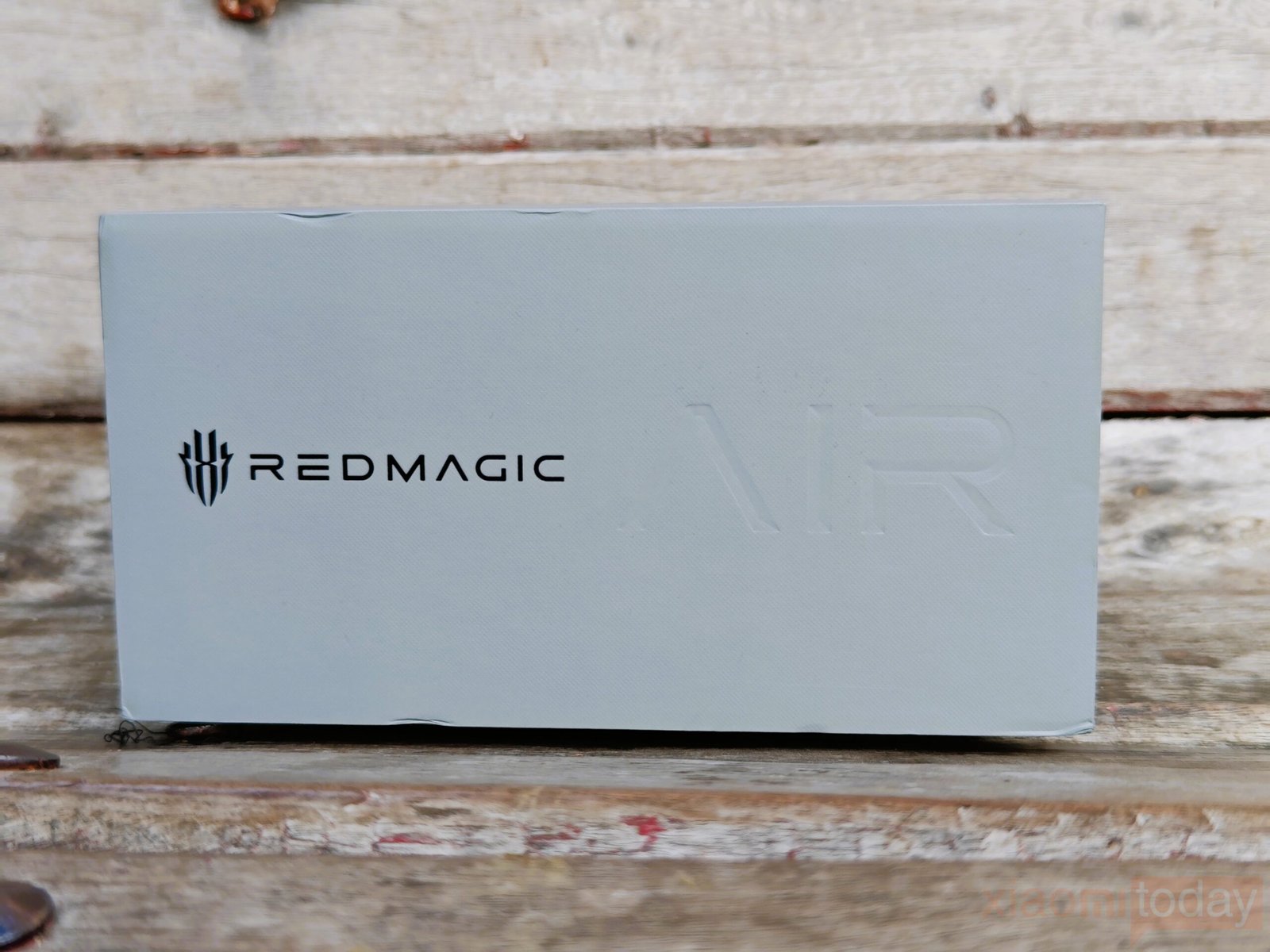
The REDMAGIC 10 Air comes neatly packed in a grey cardboard box that carries a clean look. The front showcases the bold black “REDMAGIC” logo, with “AIR” embossed beside it, creating a subtle yet refined visual balance. The minimalist design reflects the brand’s focus on premium presentation without unnecessary flair. The box feels sturdy and well-made, offering a sense of quality and care before even opening it.
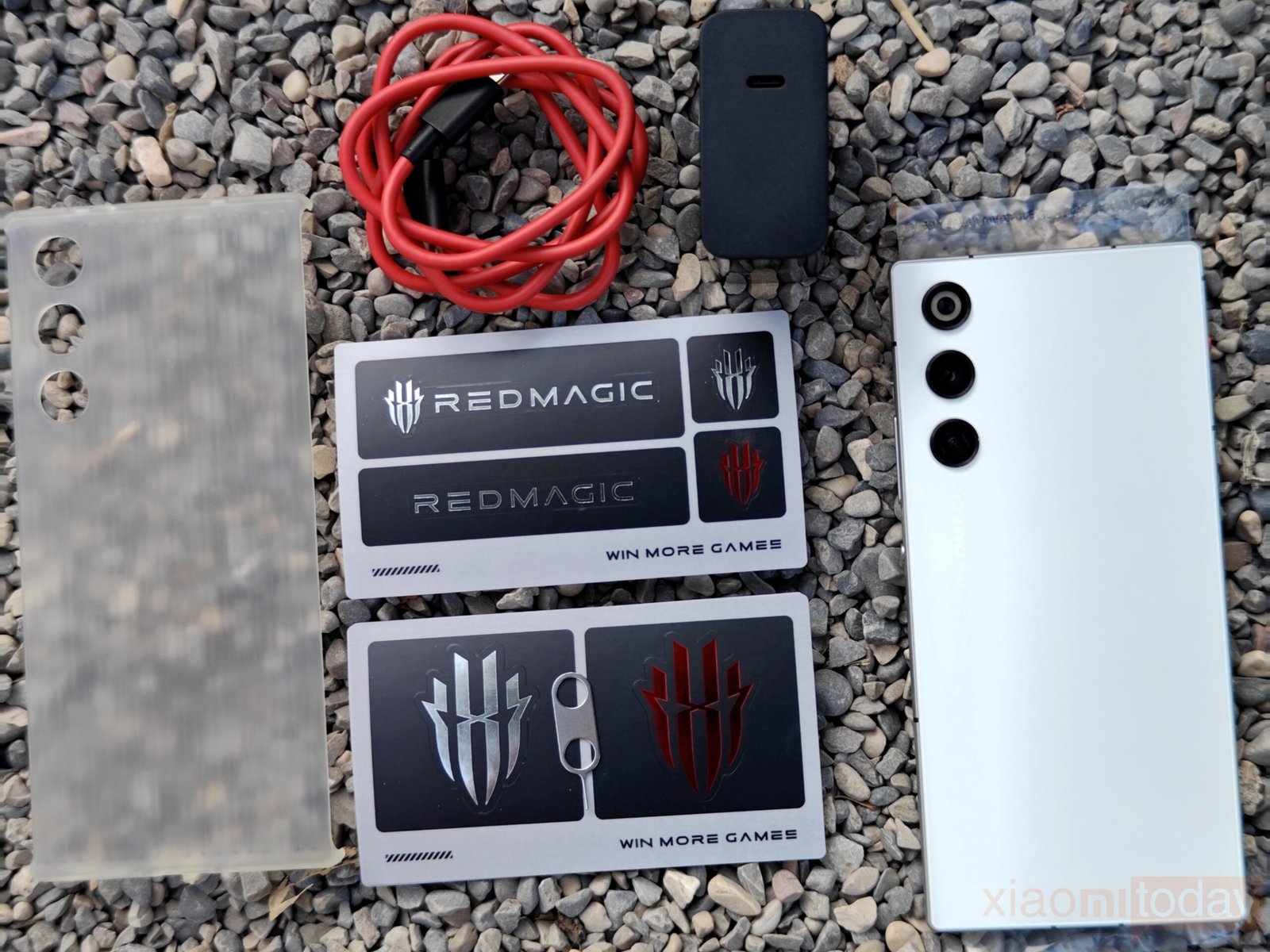
Inside the box, it includes the REDMAGIC 10 Air smartphone itself, a SIM ejector pin, an 80W USB-C power adapter, a Type-C to Type-C charging cable, a transparent hard plastic case, and REDMAGIC Stickers. The inclusion of the 80W charger allows for full-speed charging out of the box, while the clear protective case offers basic protection without hiding the phone’s design.
Design
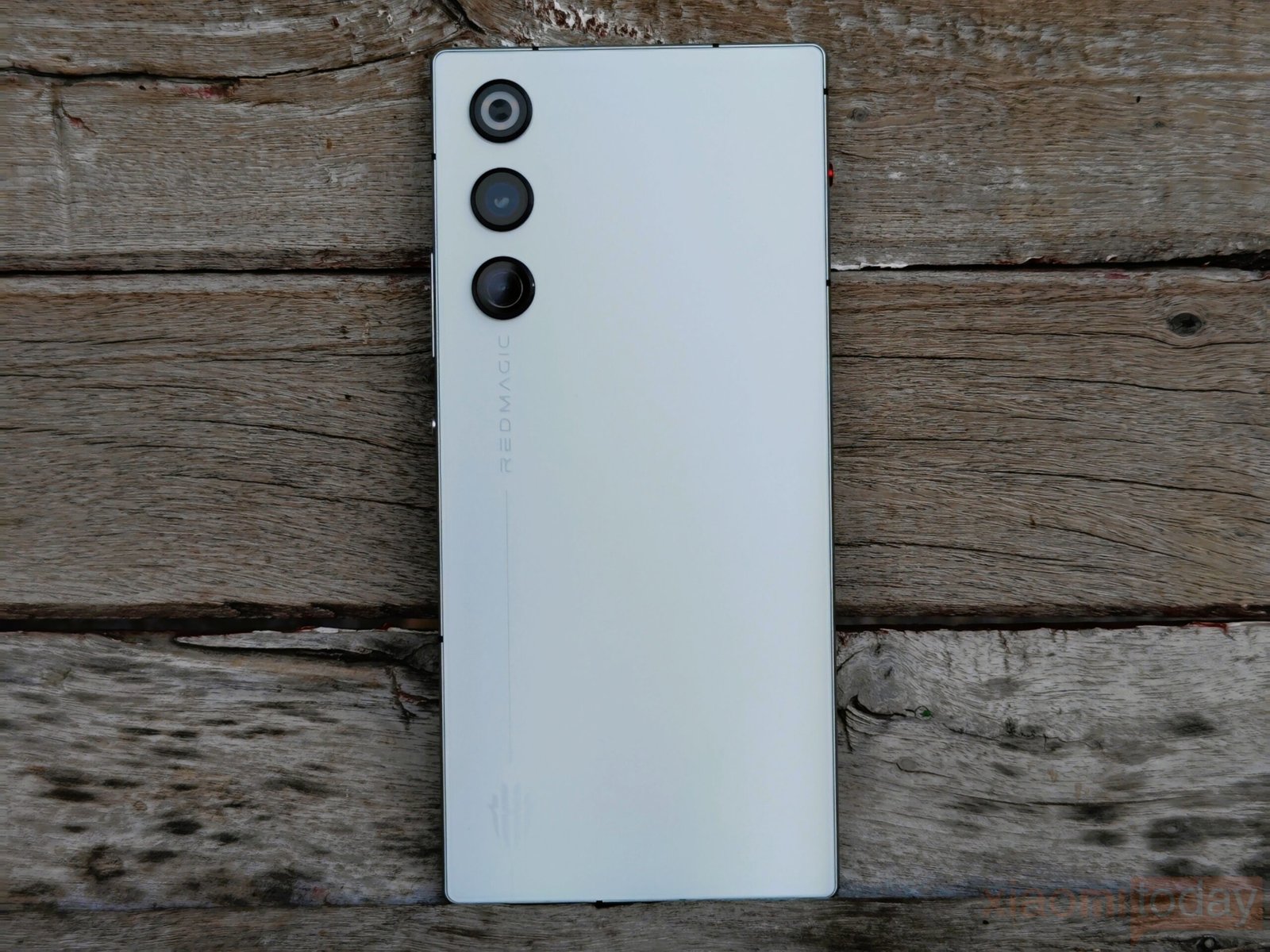
The REDMAGIC 10 Air takes a new approach with a sleek, minimalist design, moving away from the bold sci-fi aesthetic of previous models. Its slim 7.85mm metal body feels solid yet lightweight at just 205 grams, offering comfort during long gaming sessions. The smooth finish and sturdy frame deliver a premium feel, while the slightly raised rear camera adds a distinct touch that complements its refined look.
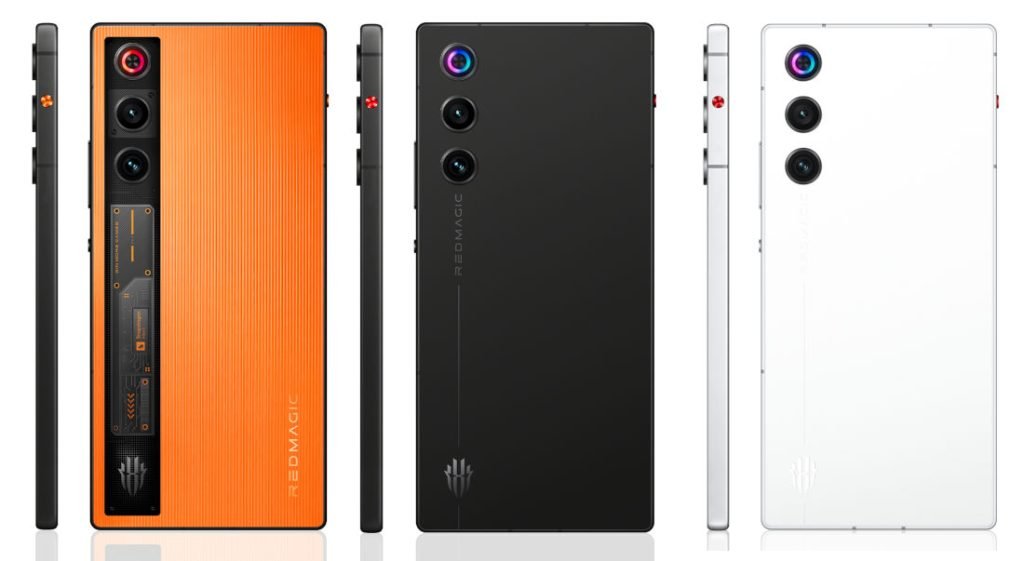
The REDMAGIC 10 Air comes in three color choices—Black Twilight, White Hailstone, and Orange Flare—offering users a mix of classic and bold designs. For this review, we have the White Hailstone version, which gives the phone a clean and refined look. Its frosted glass finish feels smooth in the hand and does a good job of resisting fingerprints. The subtle silver accents along the frame add a touch of polish, while the overall design keeps a balanced blend of modern aesthetics and gaming-inspired character. It’s a color that feels premium without being too loud, making it suitable for both everyday use and competitive gaming sessions.
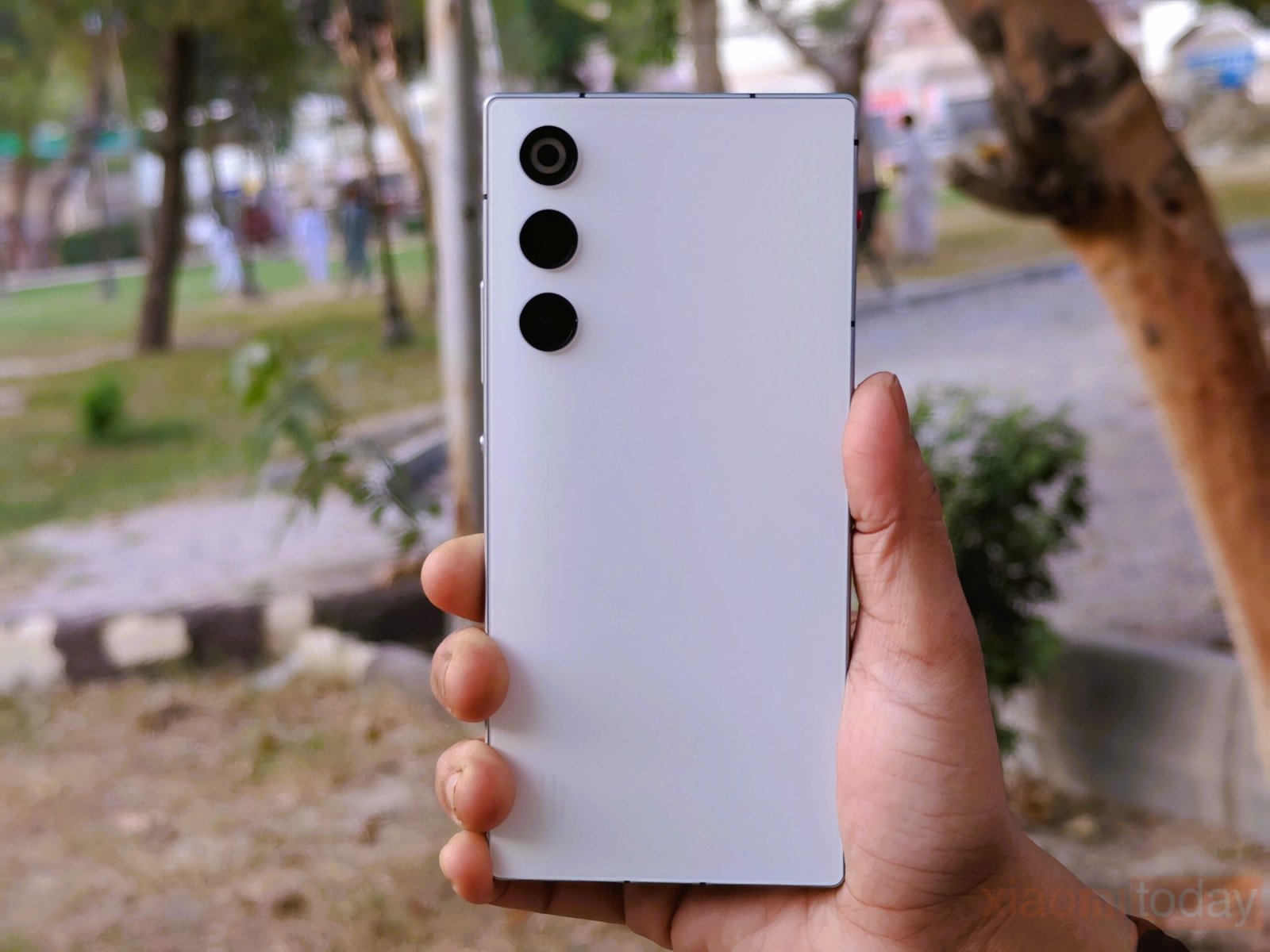
REDMAGIC’s 10 AIR adopts a slimmer and more durable design by removing its internal cooling fans, resulting in a lighter body with IP54 certification for dust and splash resistance. To keep temperatures stable, it features the new ICE-X cooling system with liquid metal and a 6,100 mm² vapor chamber for efficient heat transfer. Though the chamber is smaller than the one in the 10 Pro, REDMAGIC claims it maintains consistent thermal performance during intense gaming sessions.
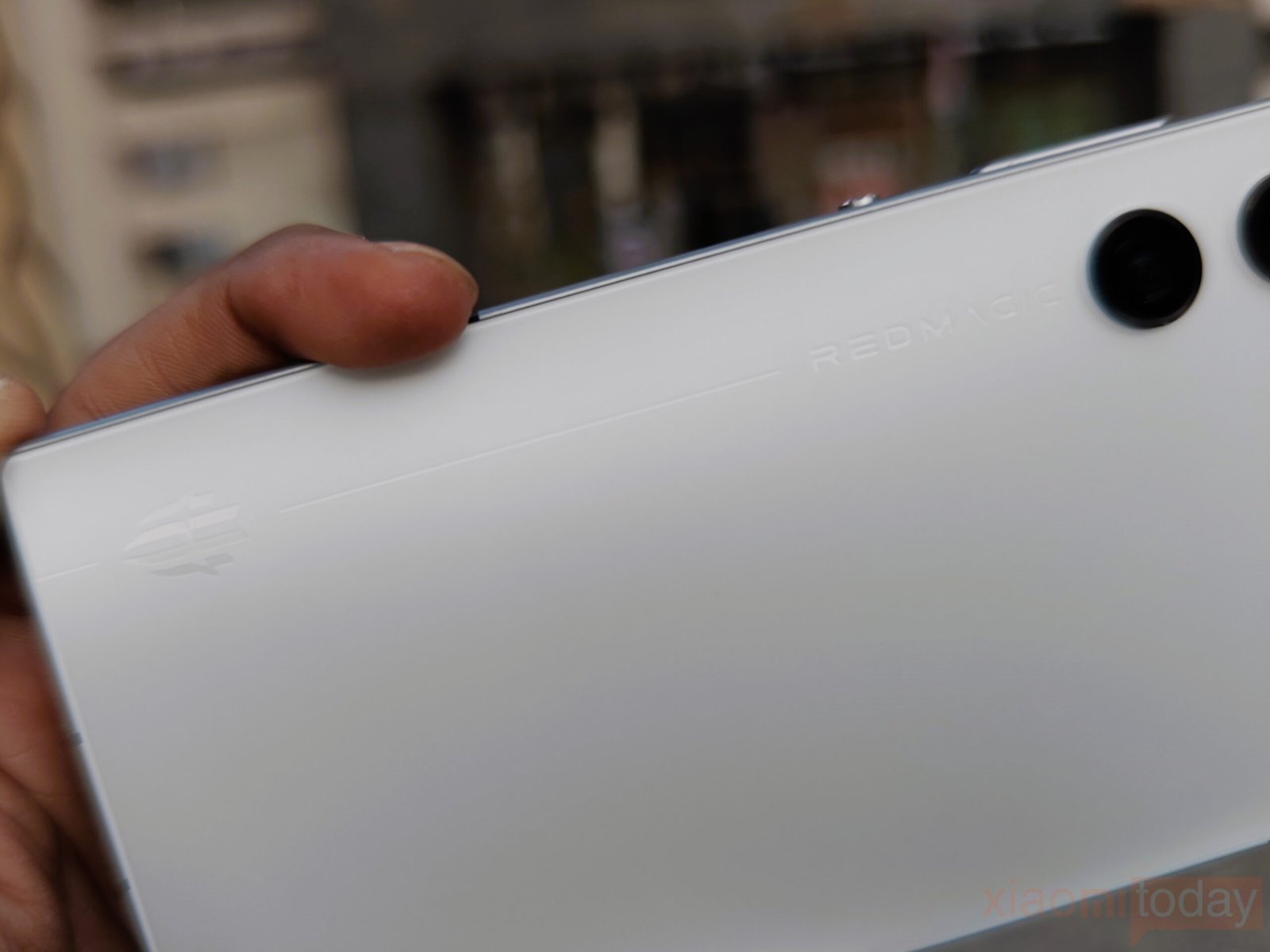
The REDMAGIC 10 series carries the familiar design with the REDMAGIC text and logo on the left side, keeping the back clean and minimal. Its simple look reflects a balanced design approach that focuses on clarity and precision.
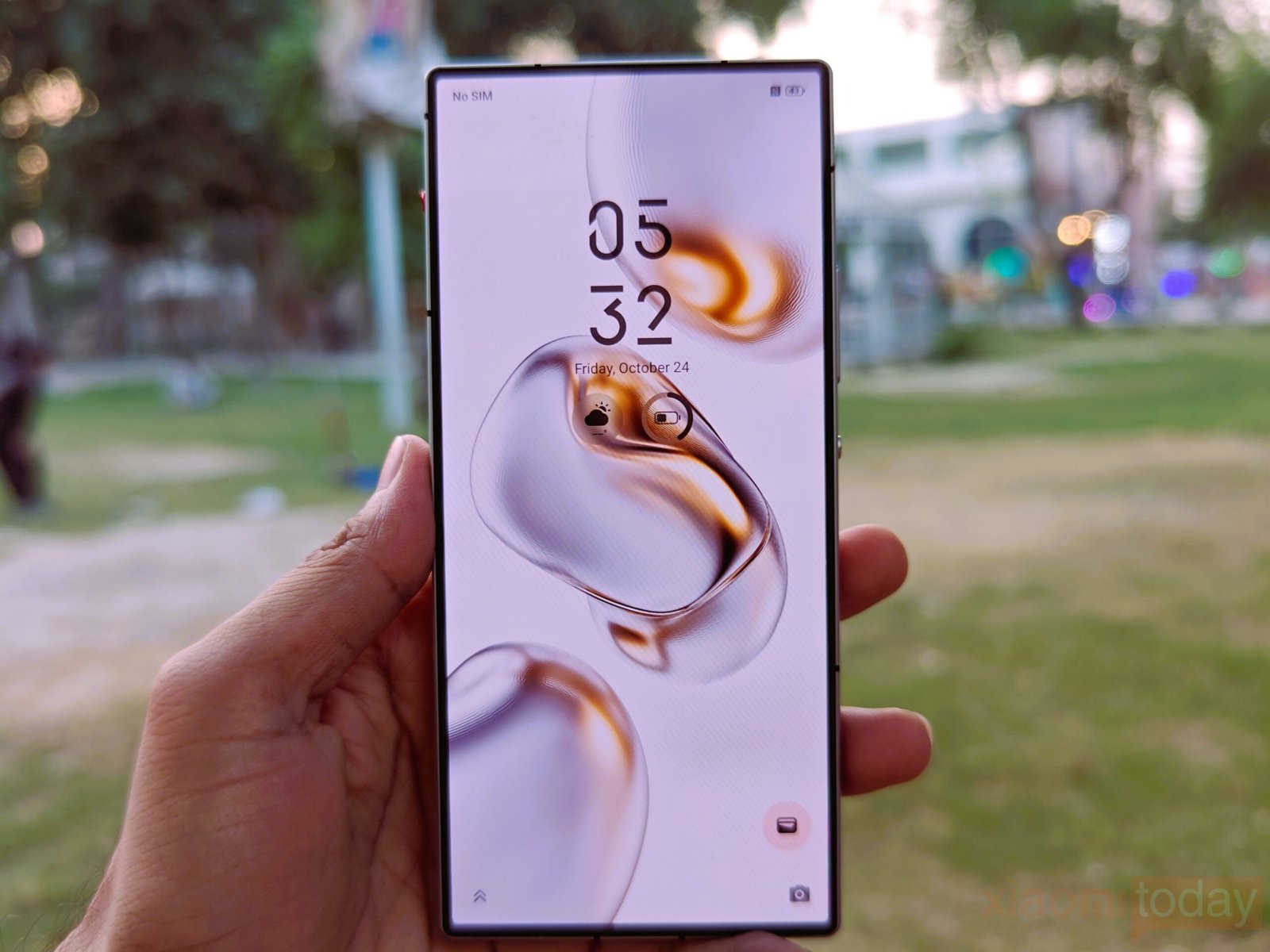
The RedMagic 10 Air comes with a 6.8-inch display that offers a resolution of 2480×1116 pixels and a 120Hz refresh rate. The screen delivers smooth motion and sharp detail, making it well-suited for gaming and media viewing. Its 2.5D right-angle edge design gives the phone a clean appearance and a comfortable grip, reducing the chance of accidental touches during everyday use. Compared to the RedMagic 10 Pro, the display is slightly smaller, but it maintains the same quality and responsiveness that users expect from the RedMagic lineup.
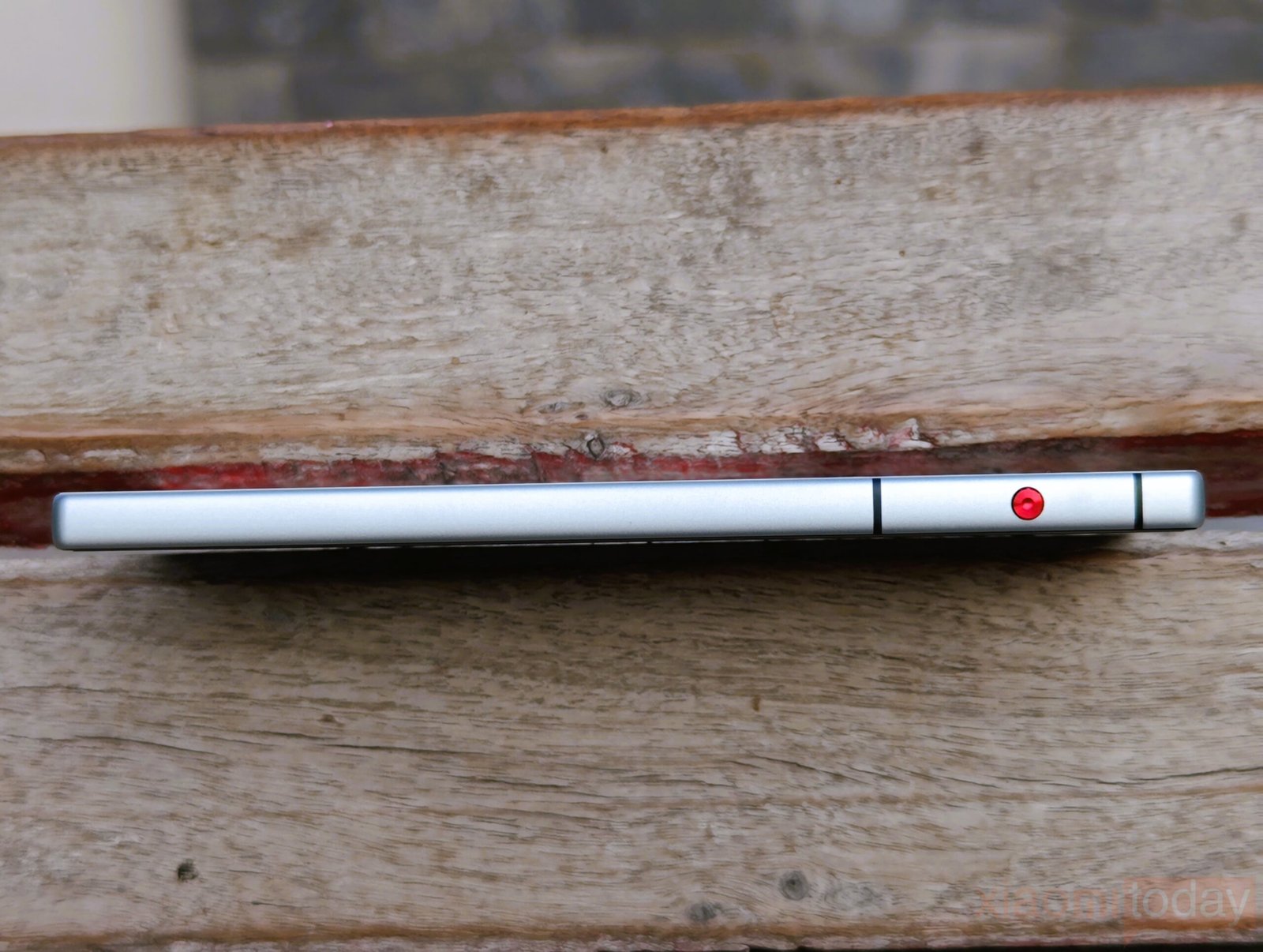
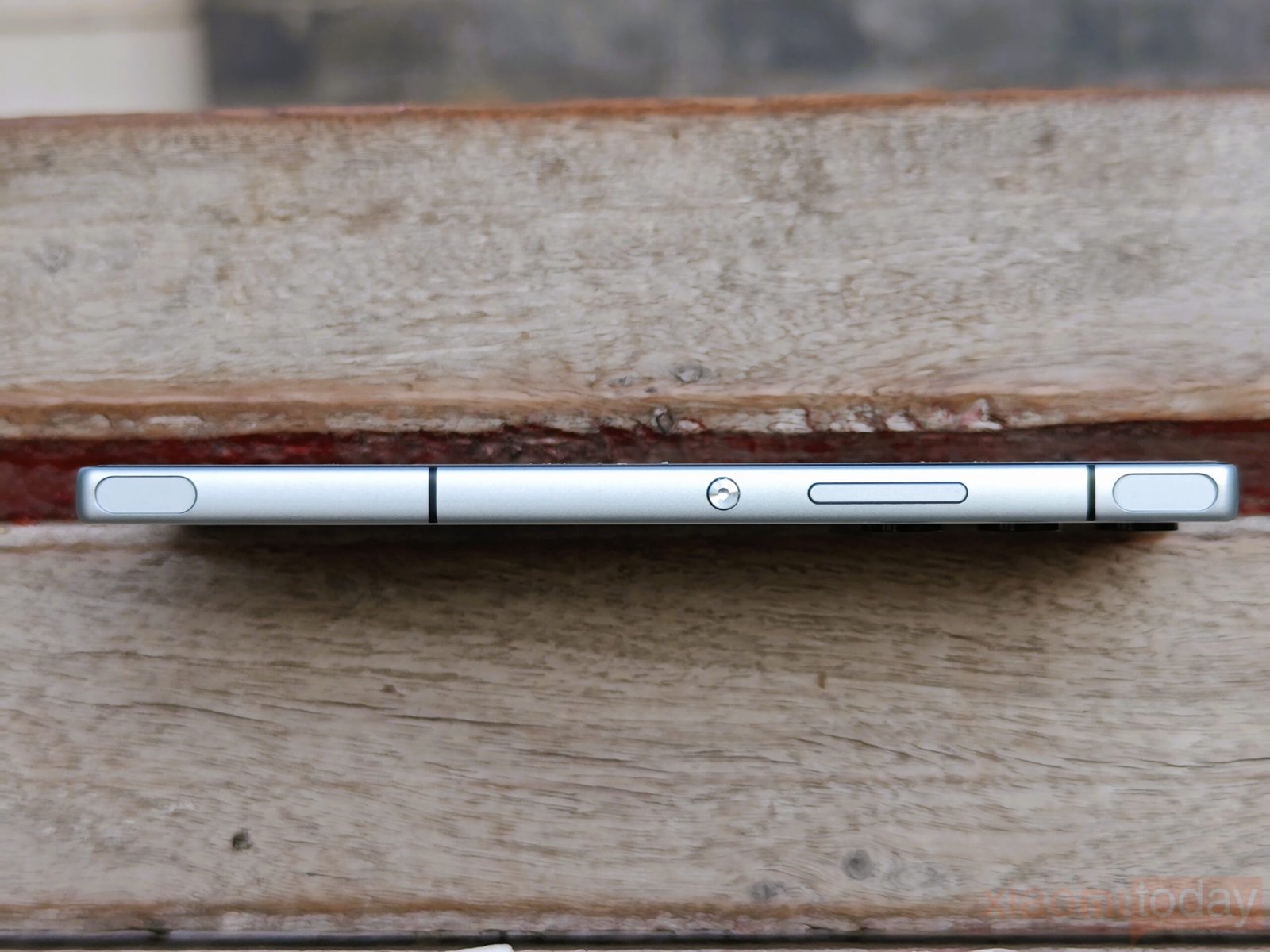
The Red Magic 10 Air keeps its focus on gaming precision with 520Hz dual IC touch shoulder keys seamlessly built into the frame for smooth control. The right side holds the volume rocker and power button, while the left features a new red multifunction button that replaces the older competitive switch. This customizable key allows quick access to Game Space, camera, sound modes, or instant translation, adding convenience to both gaming and daily use.
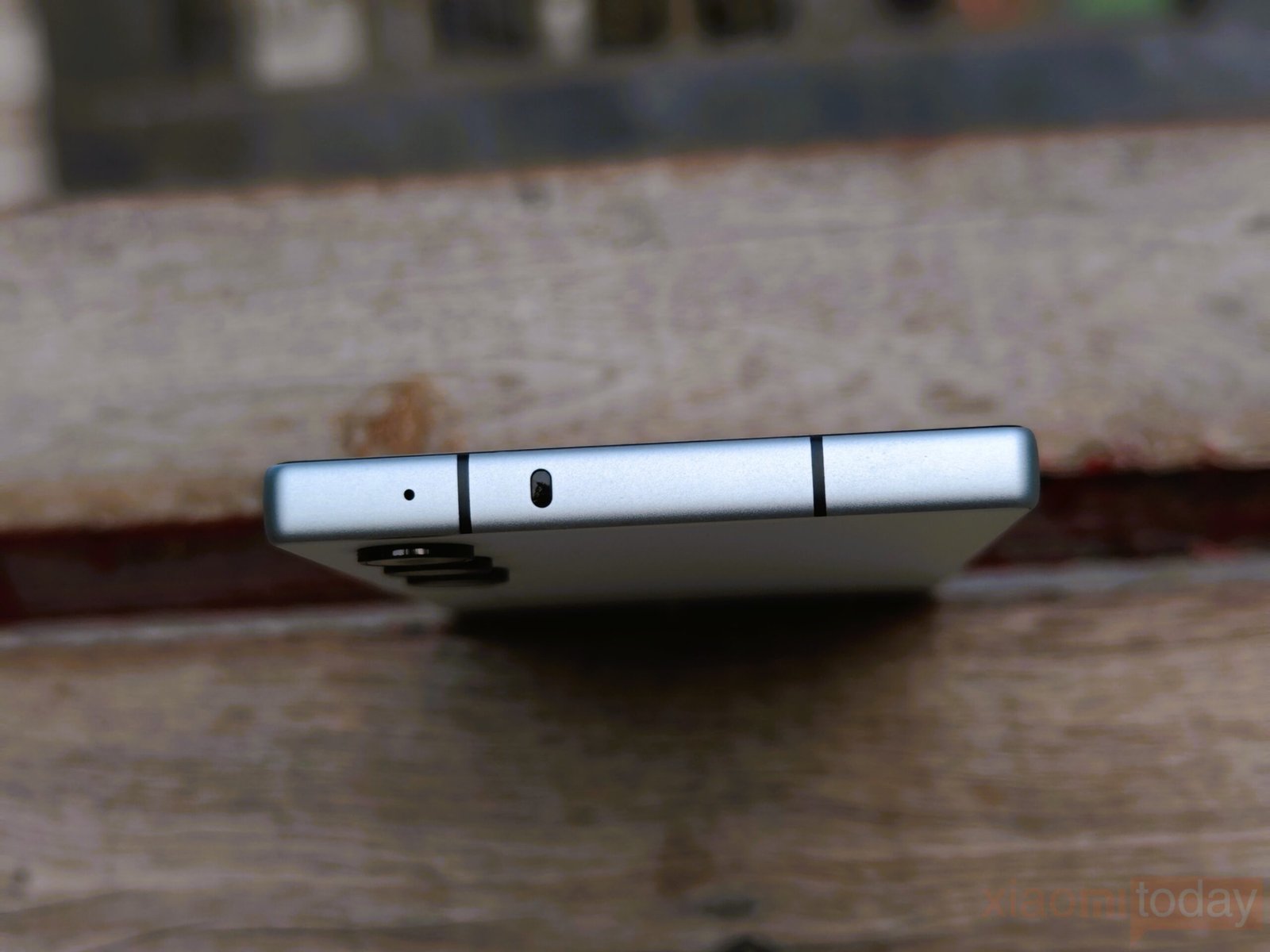

The top of the RedMagic 10 Air includes an infrared transmitter, allowing the phone to function as a universal remote—useful for controlling home devices without extra accessories. At the bottom, you’ll find the dual-SIM slot, USB-C 2.0 port, and a single speaker. Unlike the RedMagic 10 Pro, this USB-C port doesn’t offer video output, limiting external display options for gaming.
Still, the phone supports DTS:X Ultra and Qualcomm Snapdragon Sound, ensuring a clear and detailed audio experience when paired with compatible headphones. Since there’s no 3.5mm headphone jack, users can connect through a USB-C to 3.5mm adapter or use Bluetooth 5.4 for wireless audio. The stereo speakers deliver impressive volume and depth, with balanced mids and crisp highs, creating an enjoyable soundstage for gaming, streaming, or music playback.
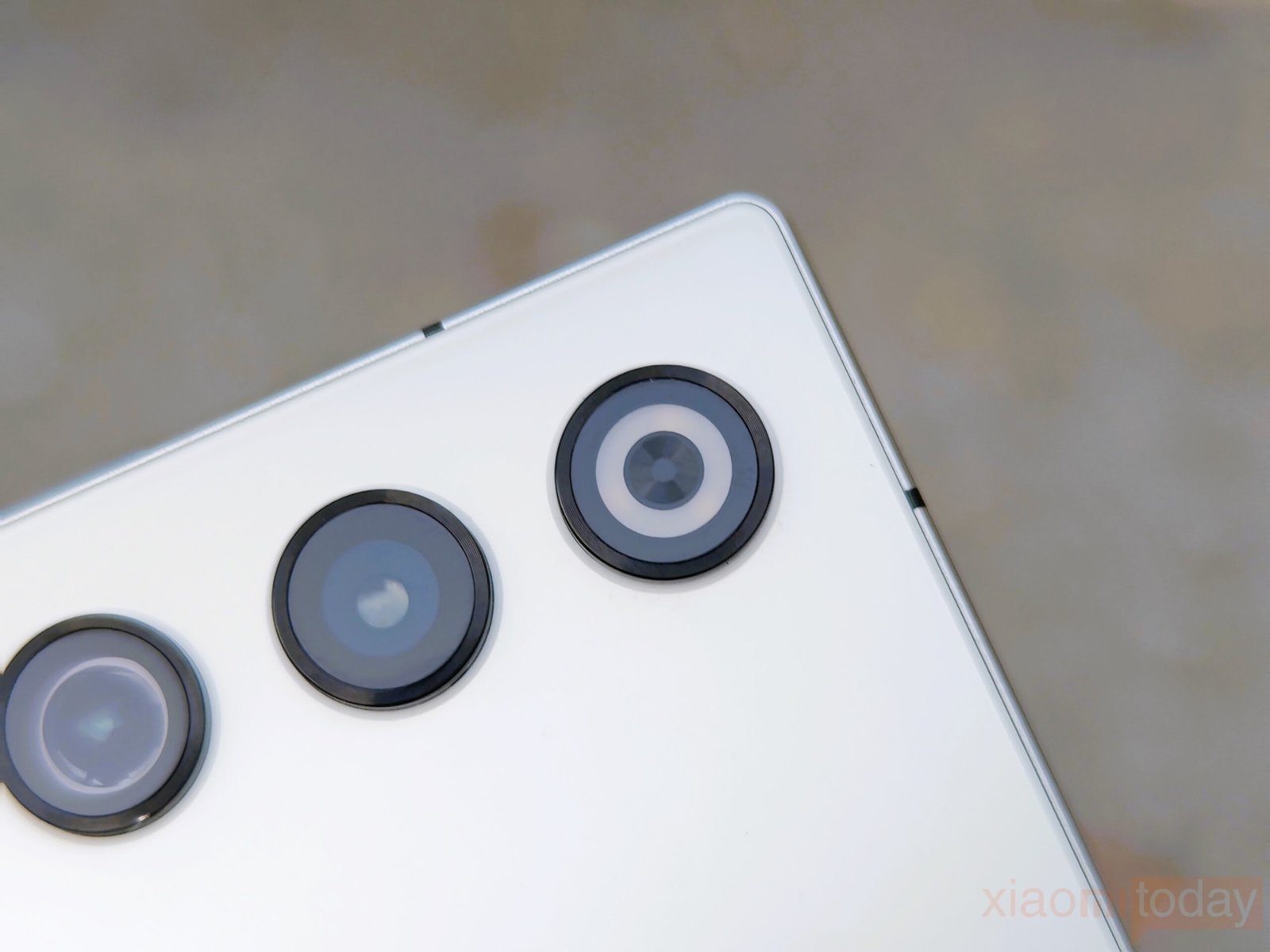



The phone features a vertical triple-camera setup with the main, ultra-wide, and flash modules neatly arranged. The top ring doubles as an RGB accent light, replacing the usual cooling fan found on gaming phones. This design keeps the rear clean while adding a subtle gaming touch with full-scene lighting that enhances its overall appeal.
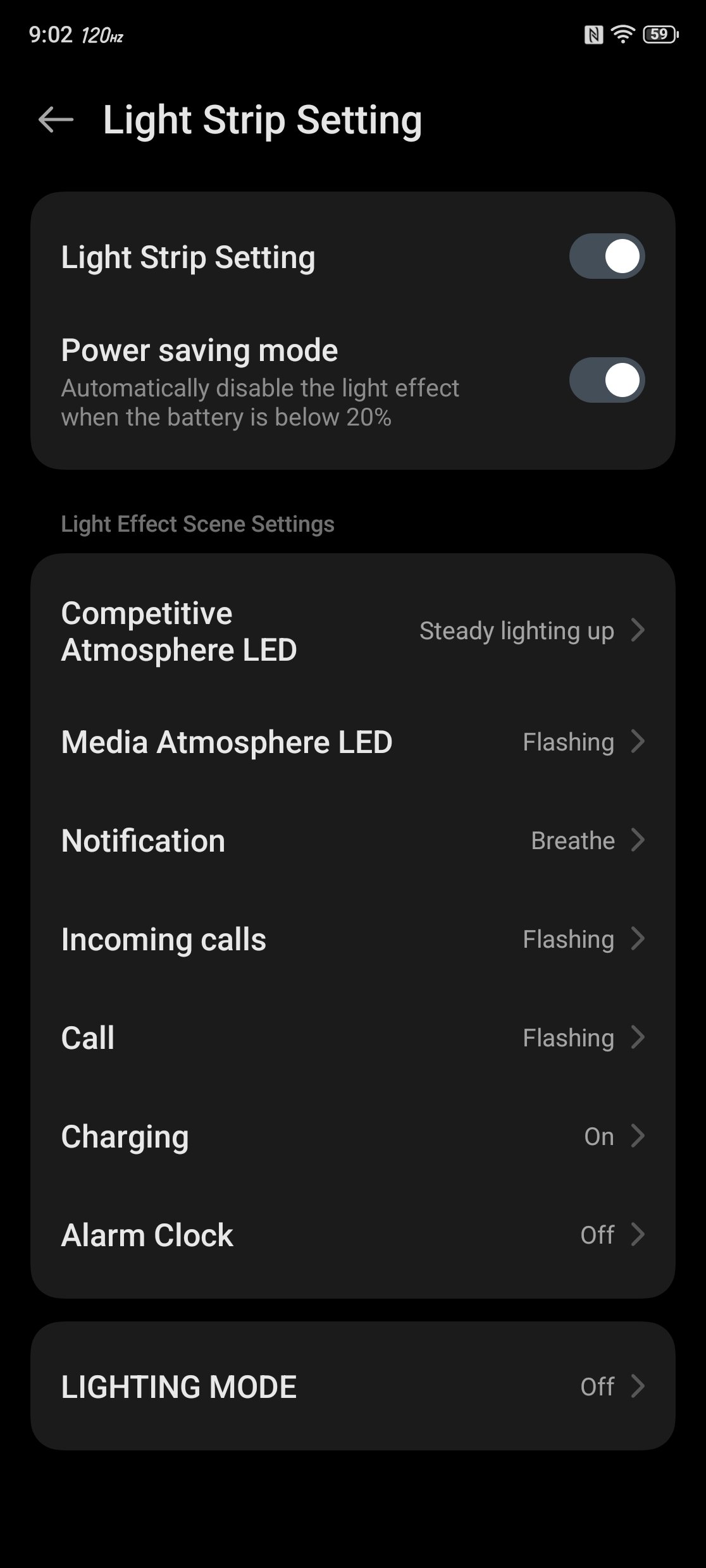
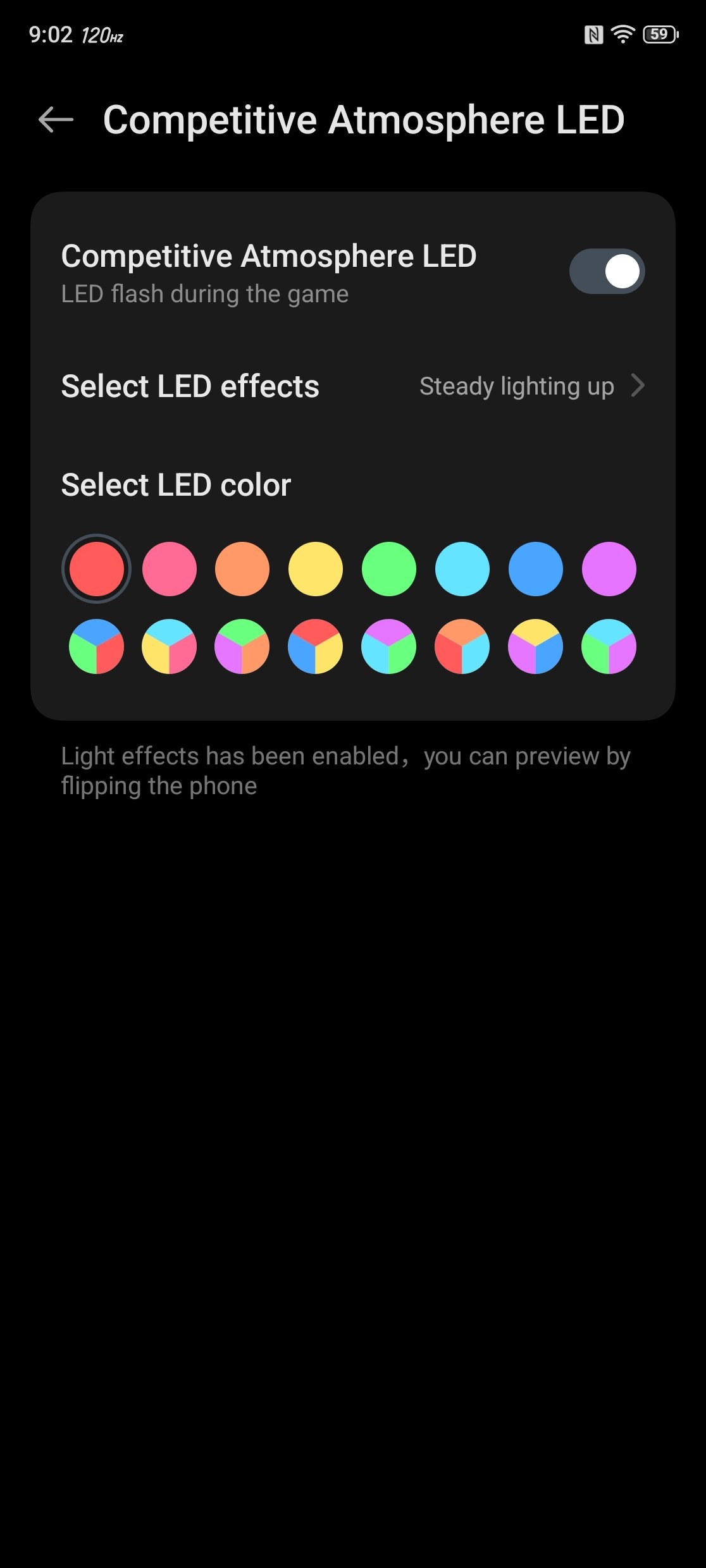
The RGB system offers several modes, including static, breathing, flashing, and flow effects. Users can pick up to three colours and set them to react to calls, notifications, or gaming sessions. It can stay on for ambience or be turned off entirely to save battery, giving users full control over the lighting experience.
Screen, Under-Display Camera & Fingerprint

The Red Magic 10 Air uses a 6.8-inch AMOLED display based on the BOE Q9+ panel, offering a resolution of 2480 x 1116 pixels, a peak brightness of 1,600 nits, and up to a 120Hz refresh rate. The screen covers 100% of the DCI-P3 color gamut, ensuring rich and accurate color reproduction. With a 93.7% screen-to-body ratio, it provides an immersive viewing experience that feels almost entirely bezelless. Although the panel is the same as the one used in the Red Magic 9 Pro and 9S Pro series, it still delivers impressive quality for both everyday use and gaming.
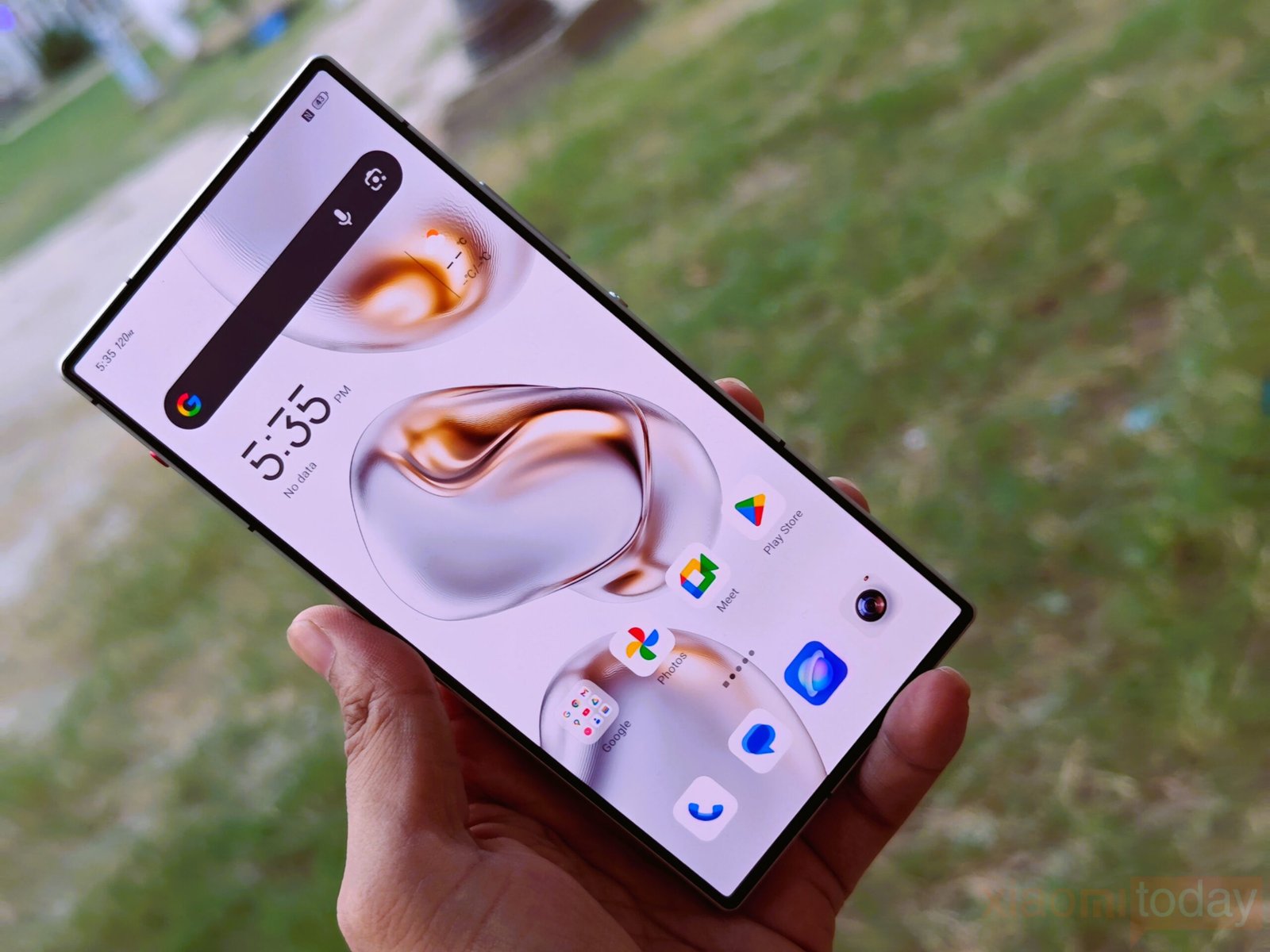
Touch response is another area where the Red Magic 10 Air performs well. It features a 960Hz global touch sampling rate and a 2,000Hz instant sampling rate, making it one of the fastest and most responsive displays available. This level of precision is especially useful in gaming, where even slight input delays can affect performance. The smoothness of touch interaction is consistent across the interface, giving the phone a fluid and accurate feel.
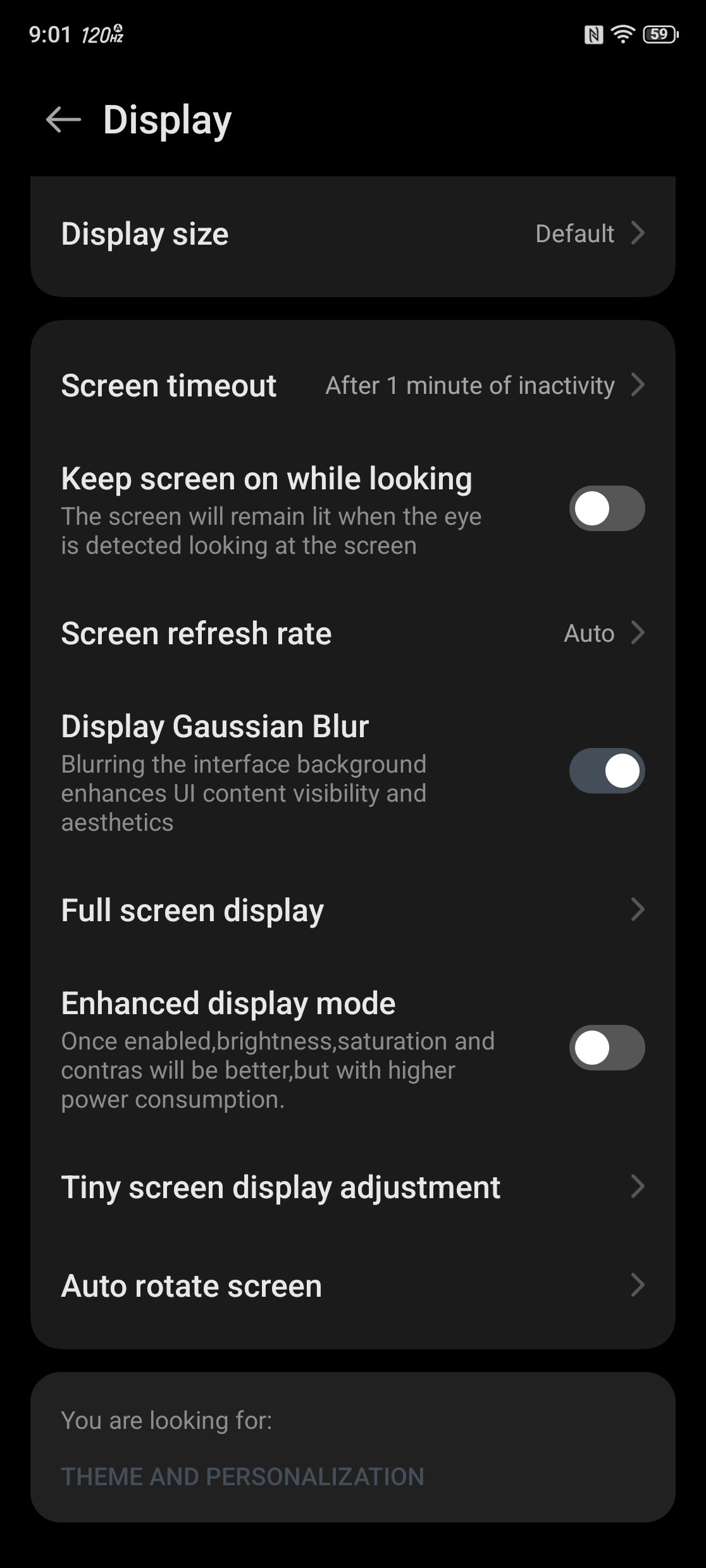
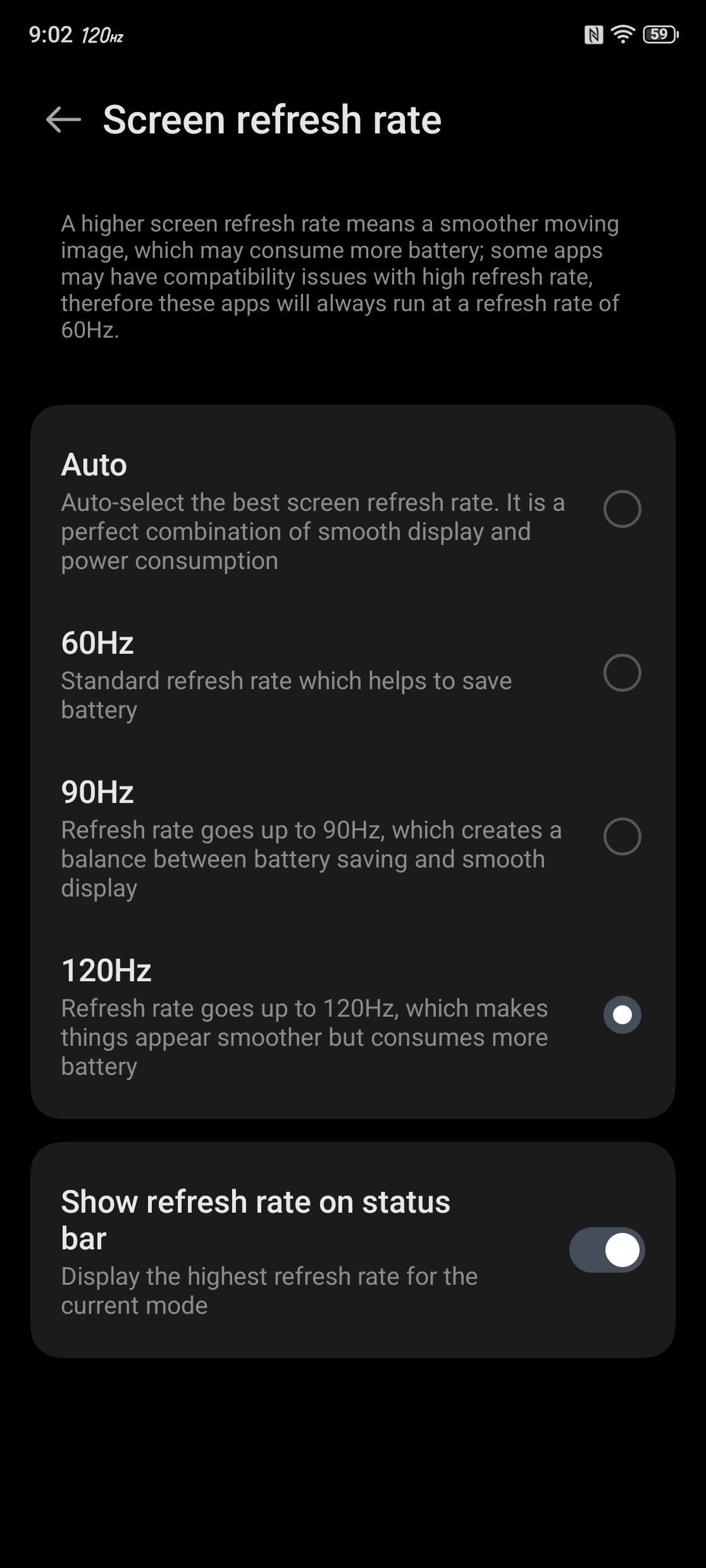
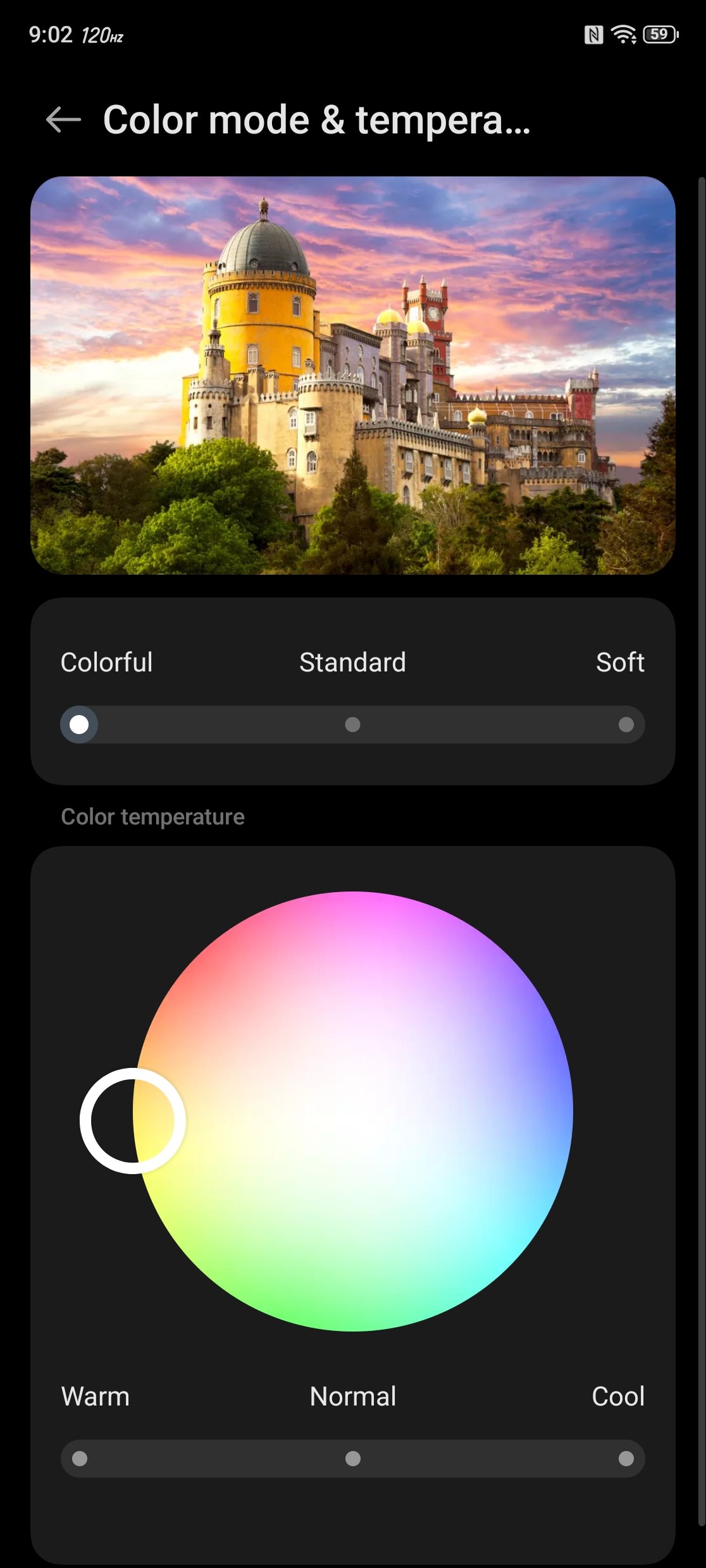
To reduce eye strain, the display supports 2160Hz high-frequency PWM dimming at low brightness and DC-like dimming in brighter conditions. These technologies help minimize flicker, creating a more comfortable viewing experience during long sessions. Users can choose between several color profiles—Standard, Soft, and Vivid—and manually adjust color temperature. Features such as Dark Mode, Night Light, and Reading Mode add flexibility for different lighting environments, while the Always-On Display is customizable and functional without drawing much power.
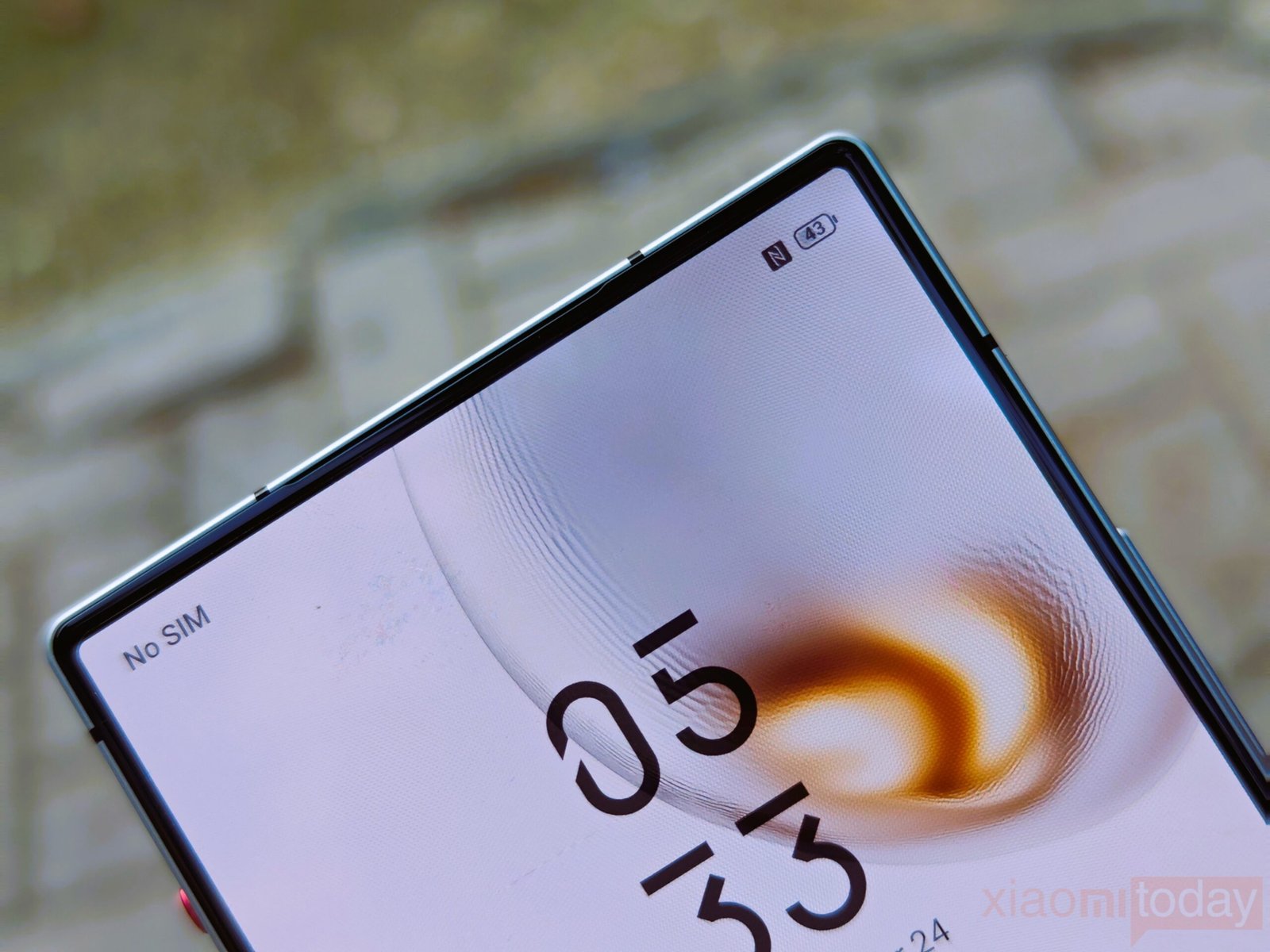
The under-display front camera continues Red Magic’s effort to deliver a full-screen experience without visual interruptions. Hidden beneath the panel, the camera is almost invisible during use, eliminating the need for punch holes or notches. This clean design improves immersion when watching videos, reading, or playing games, as there are no obstructions on the display.

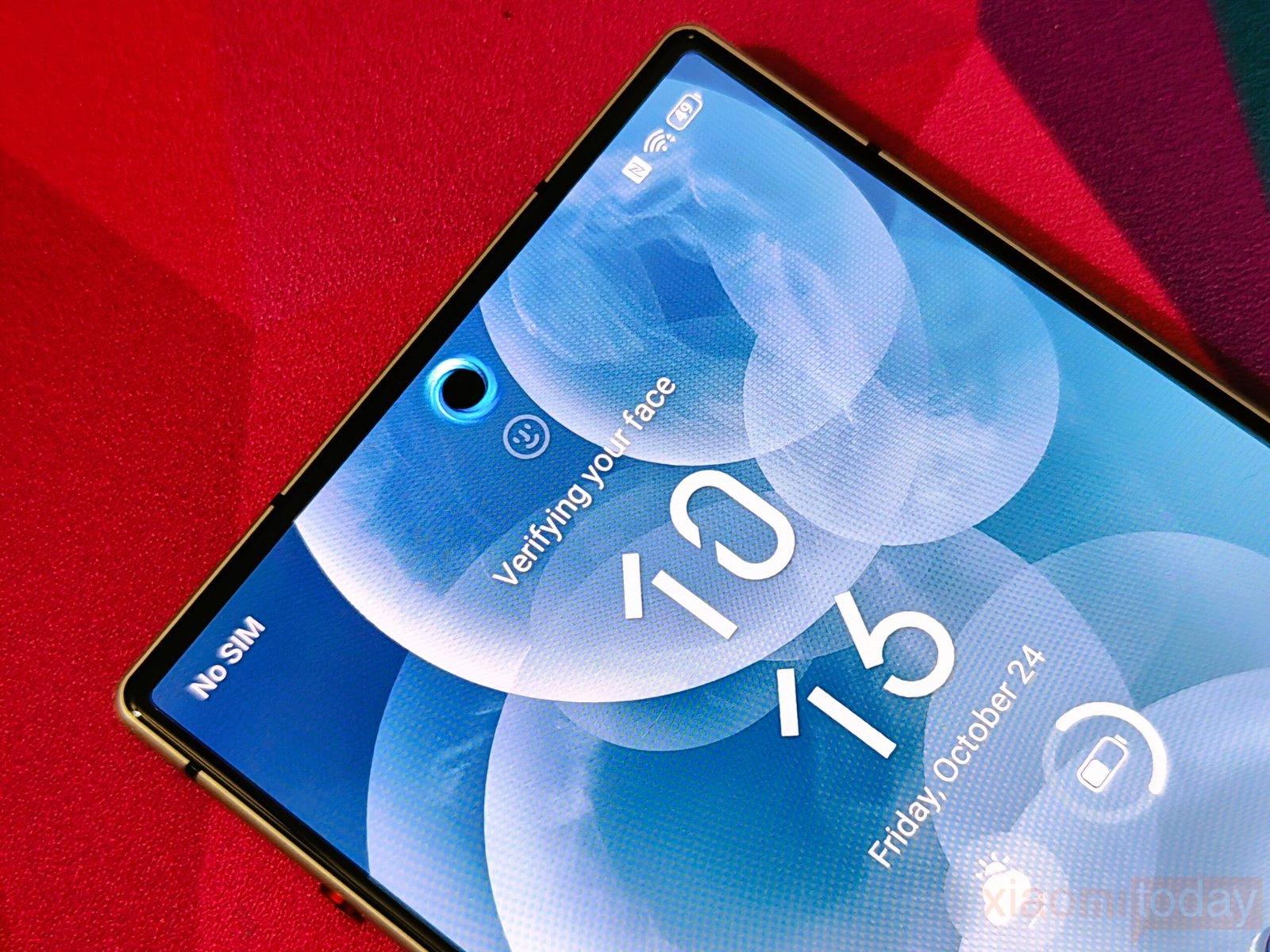
For security, the phone includes an optical fingerprint sensor embedded under the screen and facial recognition support. The fingerprint sensor performs reliably, with accurate readings and quick unlock times. Face unlock offers a convenient backup method, working well in most lighting conditions. Both options integrate smoothly into daily use, enhancing convenience without disrupting the overall experience.
Performance & Benchmarks
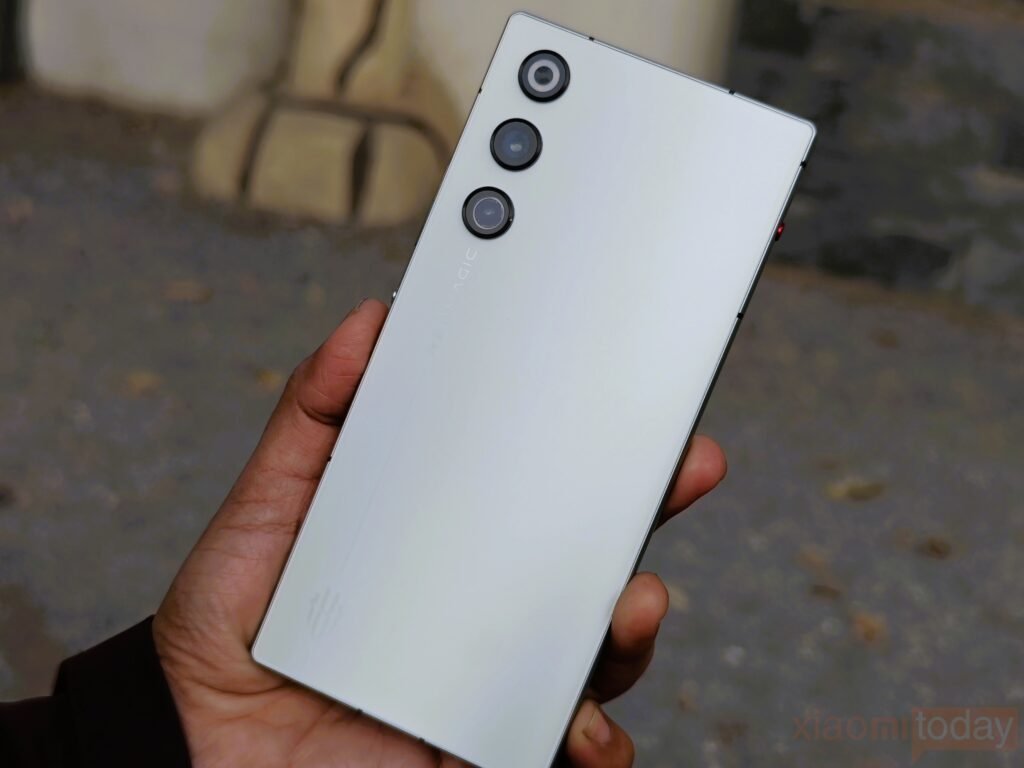
When it comes to performance, the RedMagic 10 Air is powered by Qualcomm’s Snapdragon 8 Gen 3 processor, a proven chipset that continues to offer solid performance for gaming and daily use. While it’s not the latest Snapdragon 8 Elite or MediaTek’s flagship model, the Snapdragon 8 Gen 3 still performs well across most modern games and applications.
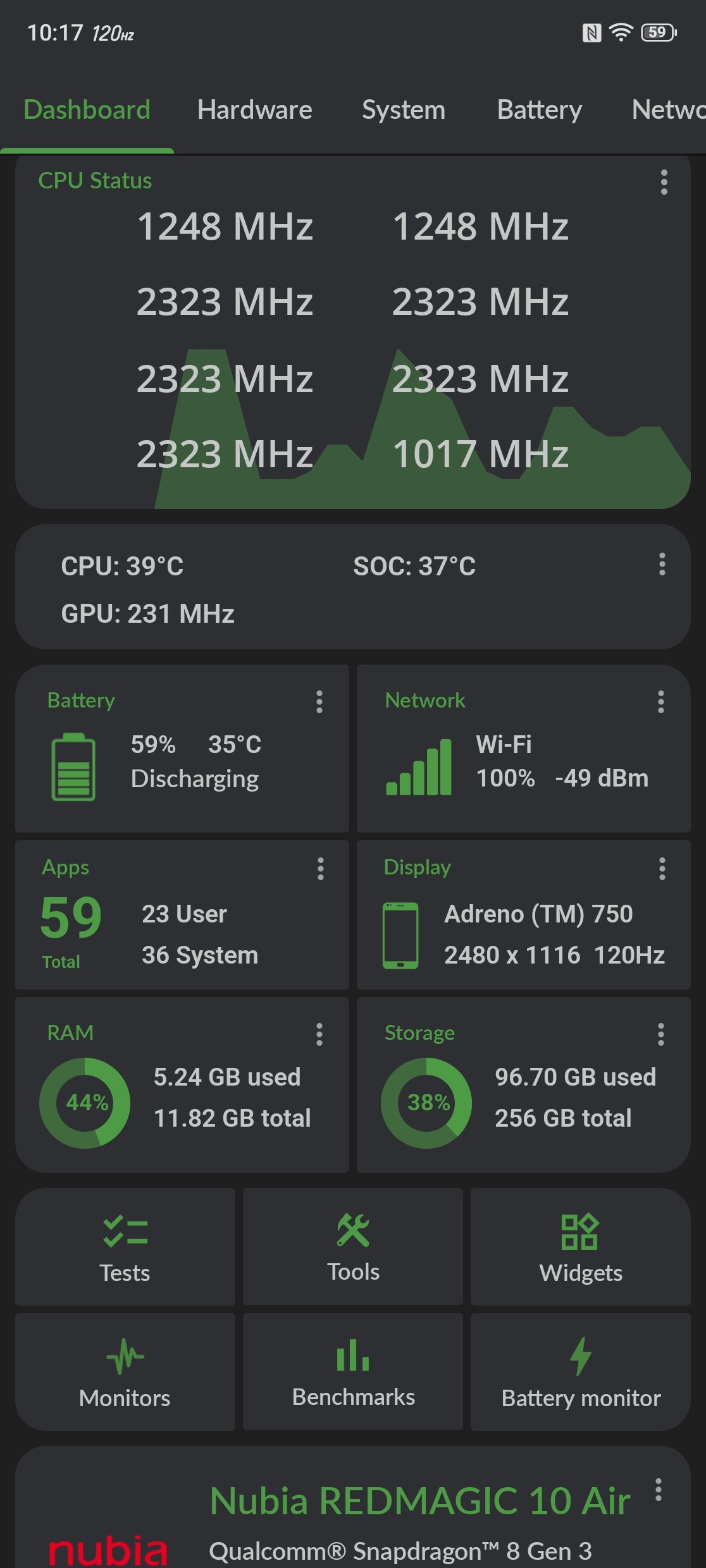

It’s built on a 4nm process and includes one Cortex-X4 prime core at 3.3GHz, three Cortex-A720 cores at 3.2GHz, two Cortex-A720 cores at 3.0GHz, and two Cortex-A520 efficiency cores at 2.3GHz. Combined with the Adreno 750 GPU, LPDDR5X memory, and UFS 4.0 storage, the phone delivers fast app loading times and smooth multitasking.
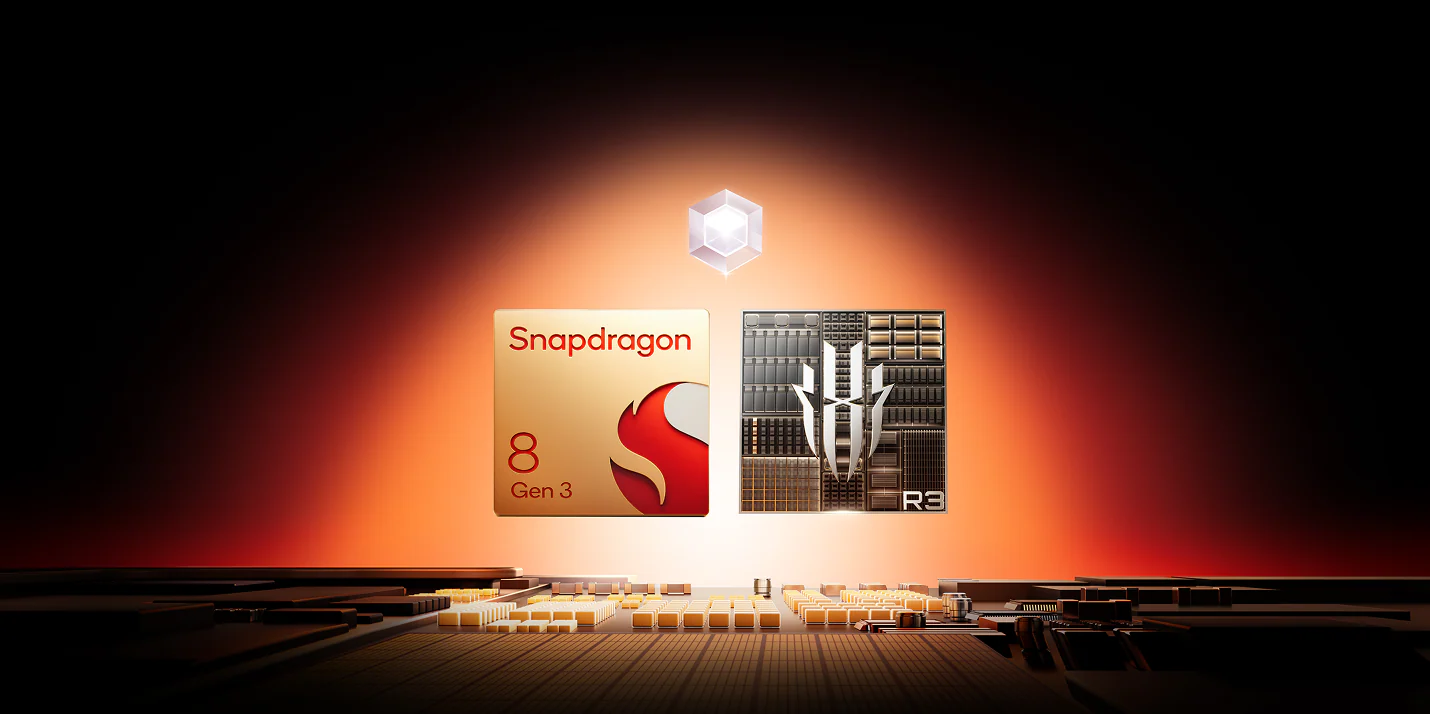
The system also features the RedCore R3 chip, designed to enhance gaming functions such as touch response and network performance. While the improvement from this chip is difficult to measure directly, the overall gaming experience remained smooth and consistent during testing.
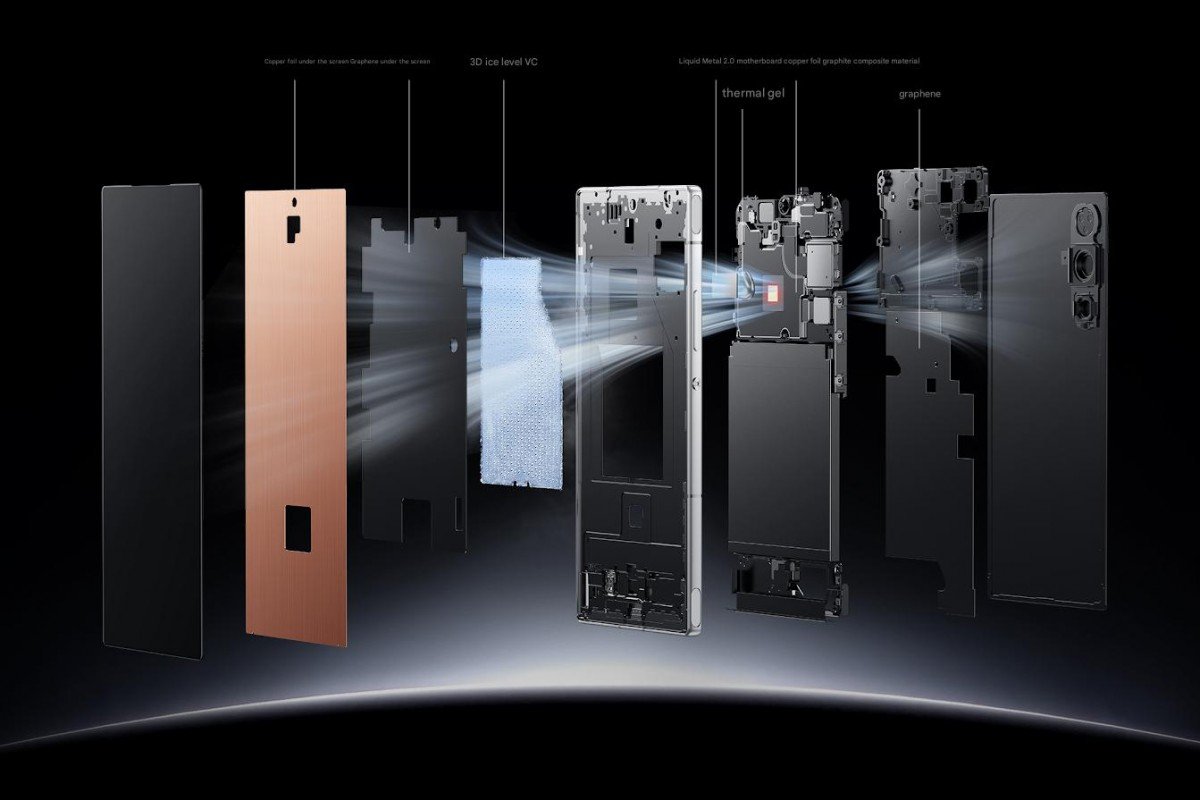
To control heat, the RedMagic 10 Air uses the 9-layer ICE-X cooling system with liquid metal. This setup helps maintain stable performance during extended sessions. Even after long gaming runs, the phone’s surface temperature stayed comfortable, and there was little to no noticeable throttling.
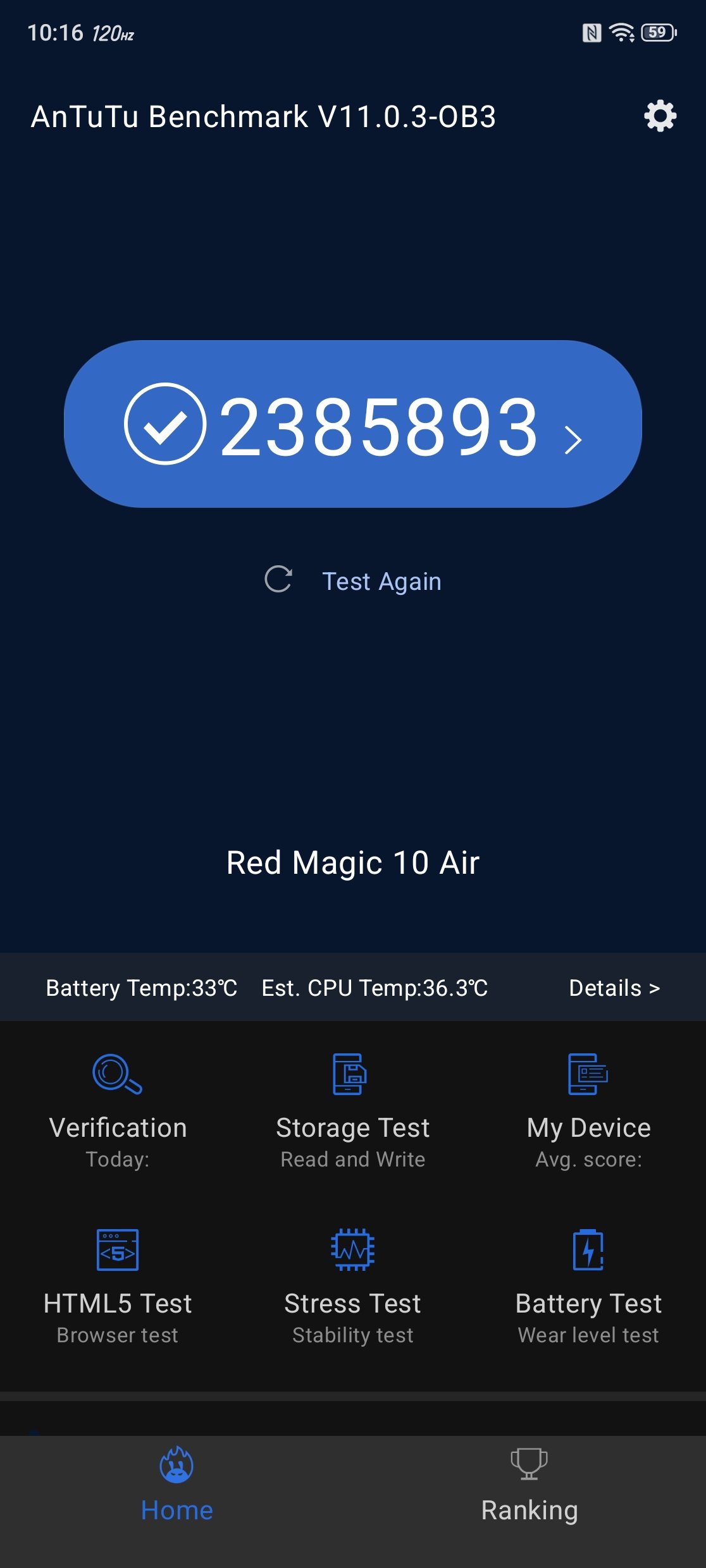


In benchmark tests, the RedMagic 10 Air showed strong performance numbers. It scored 2,385,893 points on AnTuTu, achieved 2,185 in single-core and 6,727 in multi-core tests on Geekbench 6, and reached 1,535,733 on the AITUTU benchmark.
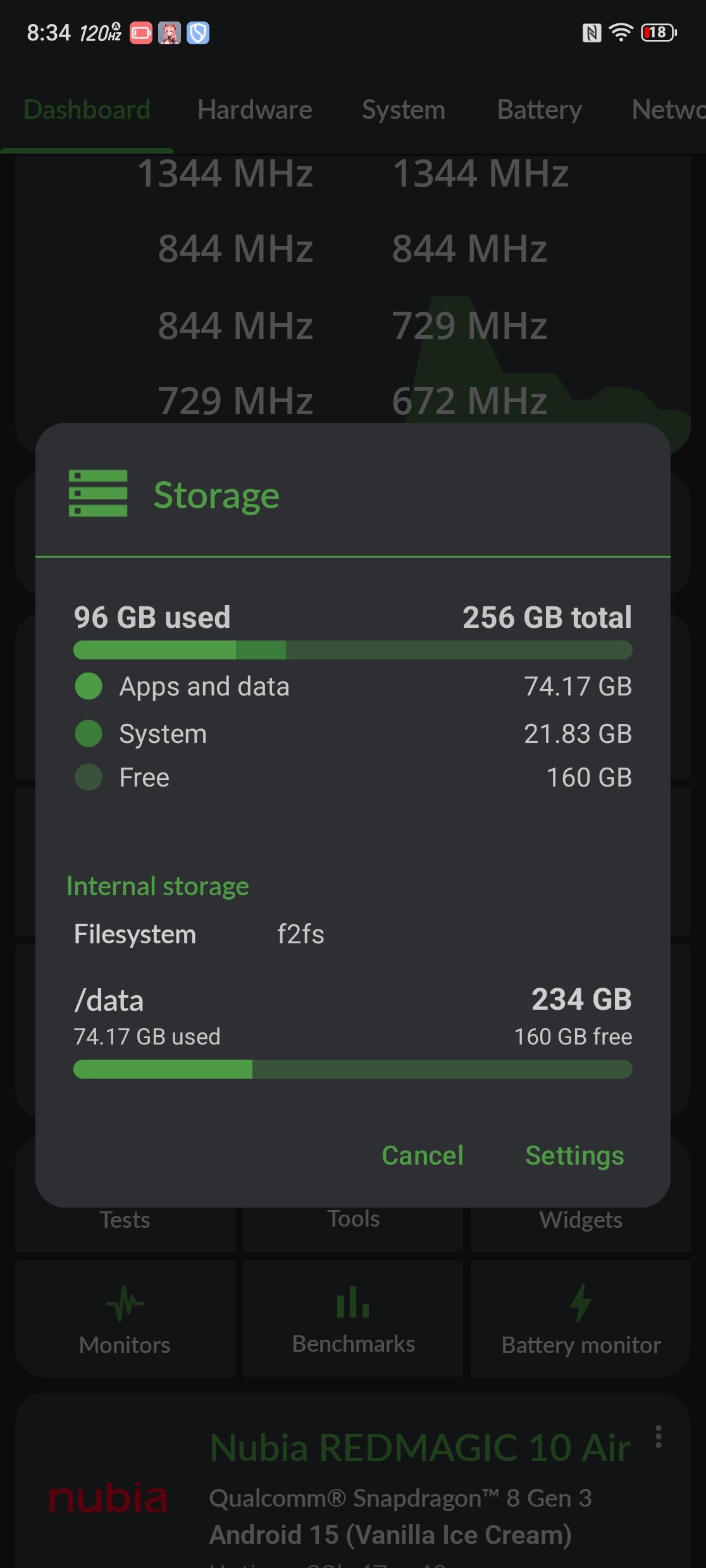

Storage performance was also excellent, with read speeds of 3971 MB/s and write speeds of 3153.8 MB/s, confirming fast data access and app handling.
| Benchmark Test | Score / Result |
|---|---|
| AnTuTu Benchmark | 2,385,893 |
| Geekbench 6 | Single-Core: 2,185 / Multi-Core: 6,727 |
| AITUTU Benchmark | 1,535,733 |
| Storage Speed | Read: 3971 MB/s / Write: 3153.8 MB/s |
PUBG Mobile Performance
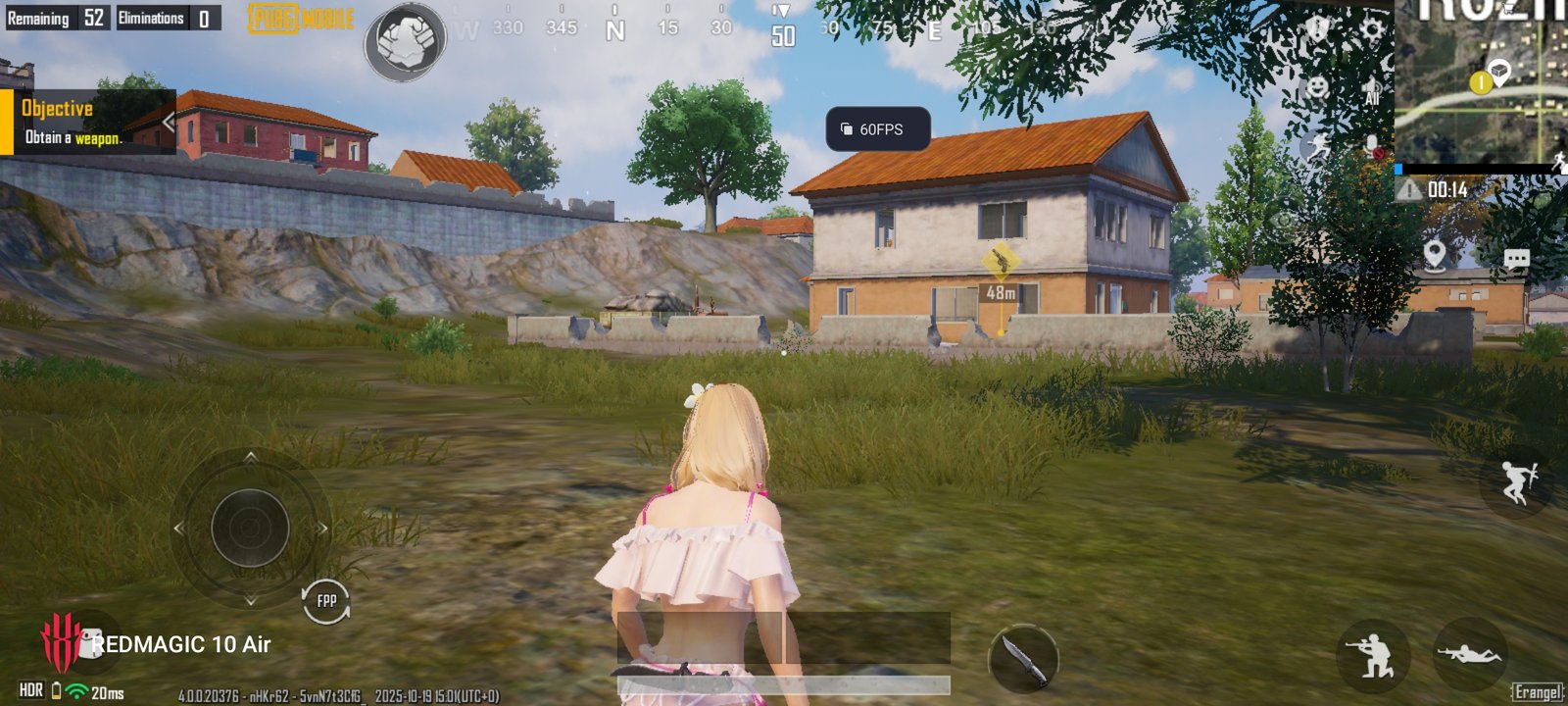
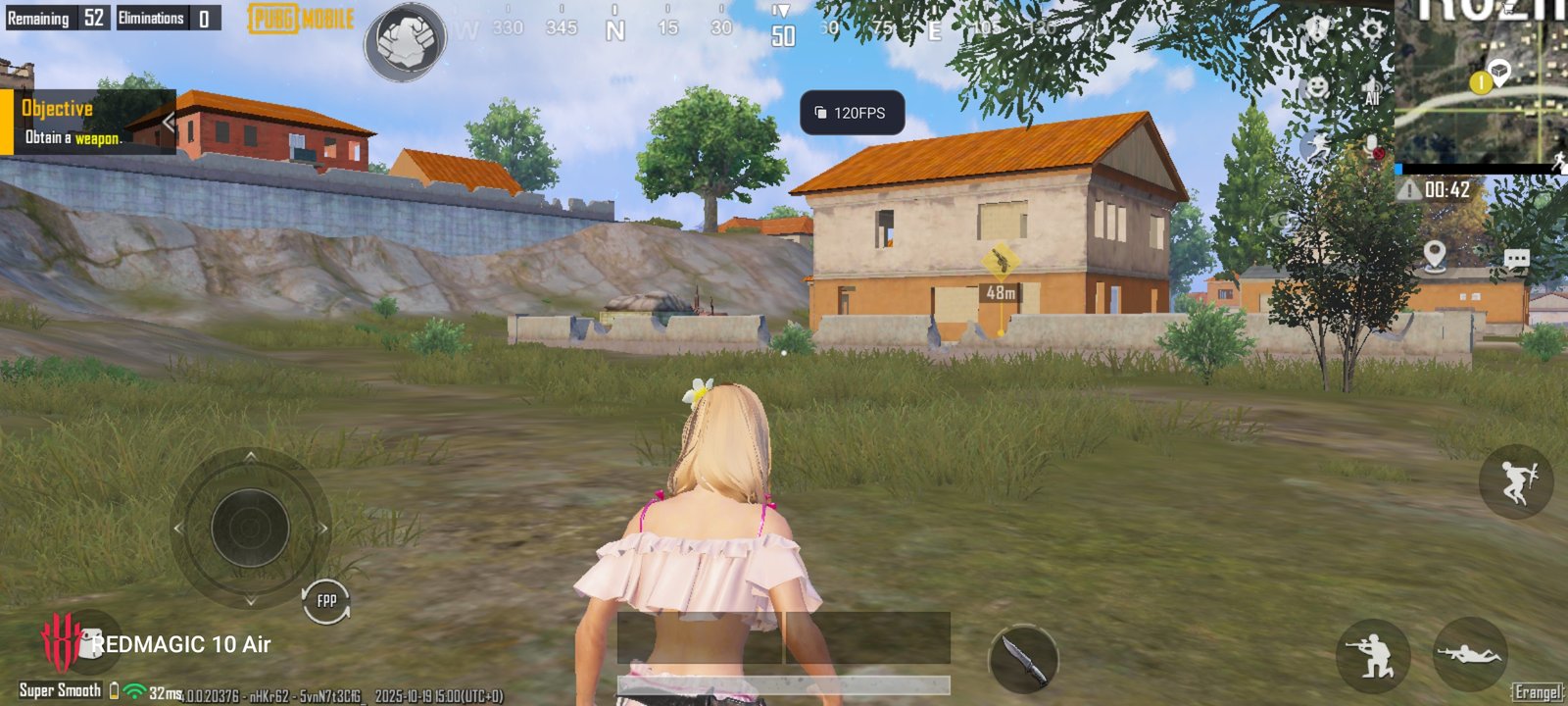
PUBG Mobile continues to be a reliable test for smartphone gaming performance, and the RedMagic 10 Air handled it with ease. When set to Super Smooth + Ultra Extreme mode, the device maintained a consistent 120 FPS during gameplay, offering a fluid experience even in crowded combat zones. Switching to HDR + Extreme Frame Rate mode reduced the maximum frame rate to 60 FPS, but the visuals became noticeably richer with improved lighting and shadows. Throughout testing, frame drops were rare, and temperatures remained under control thanks to the effective cooling system.
Destiny: Rising Performance
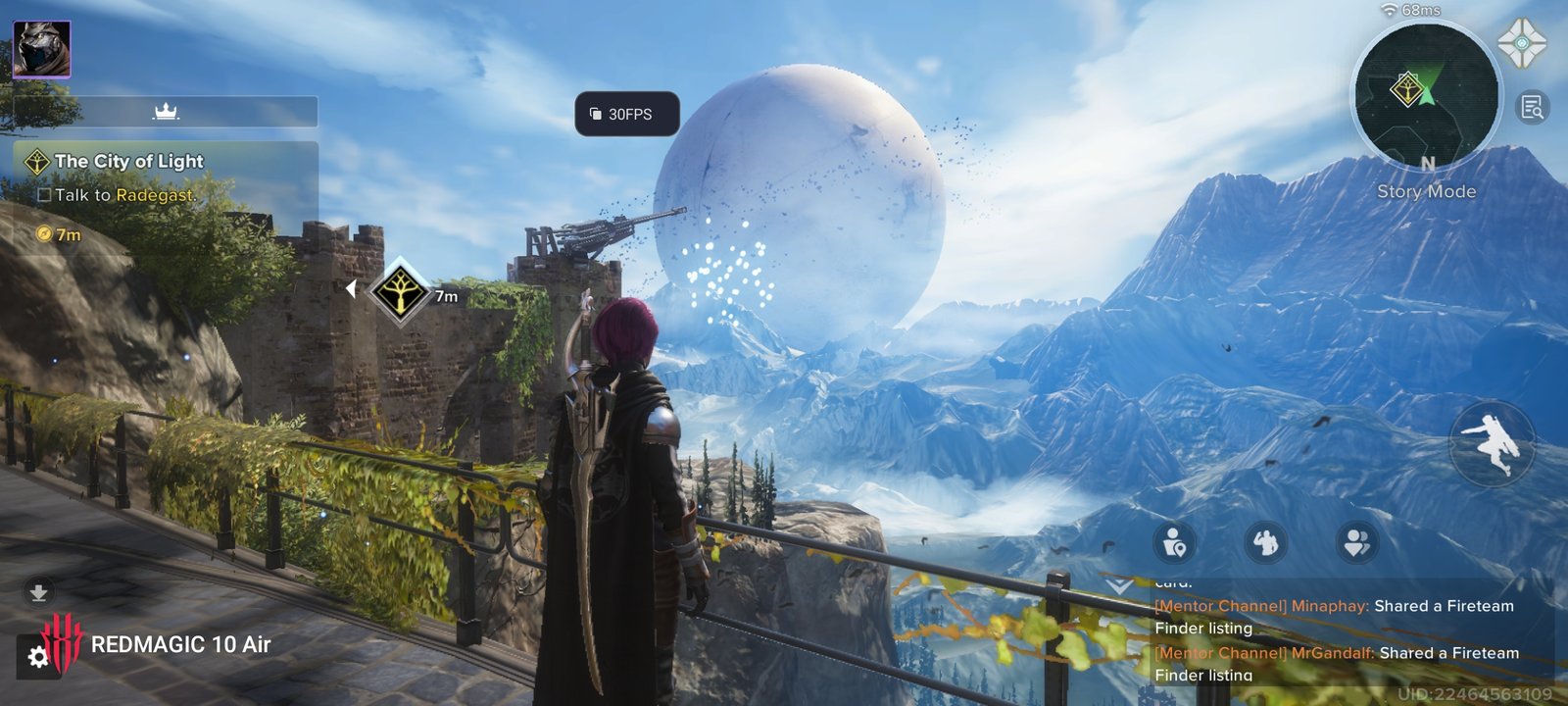

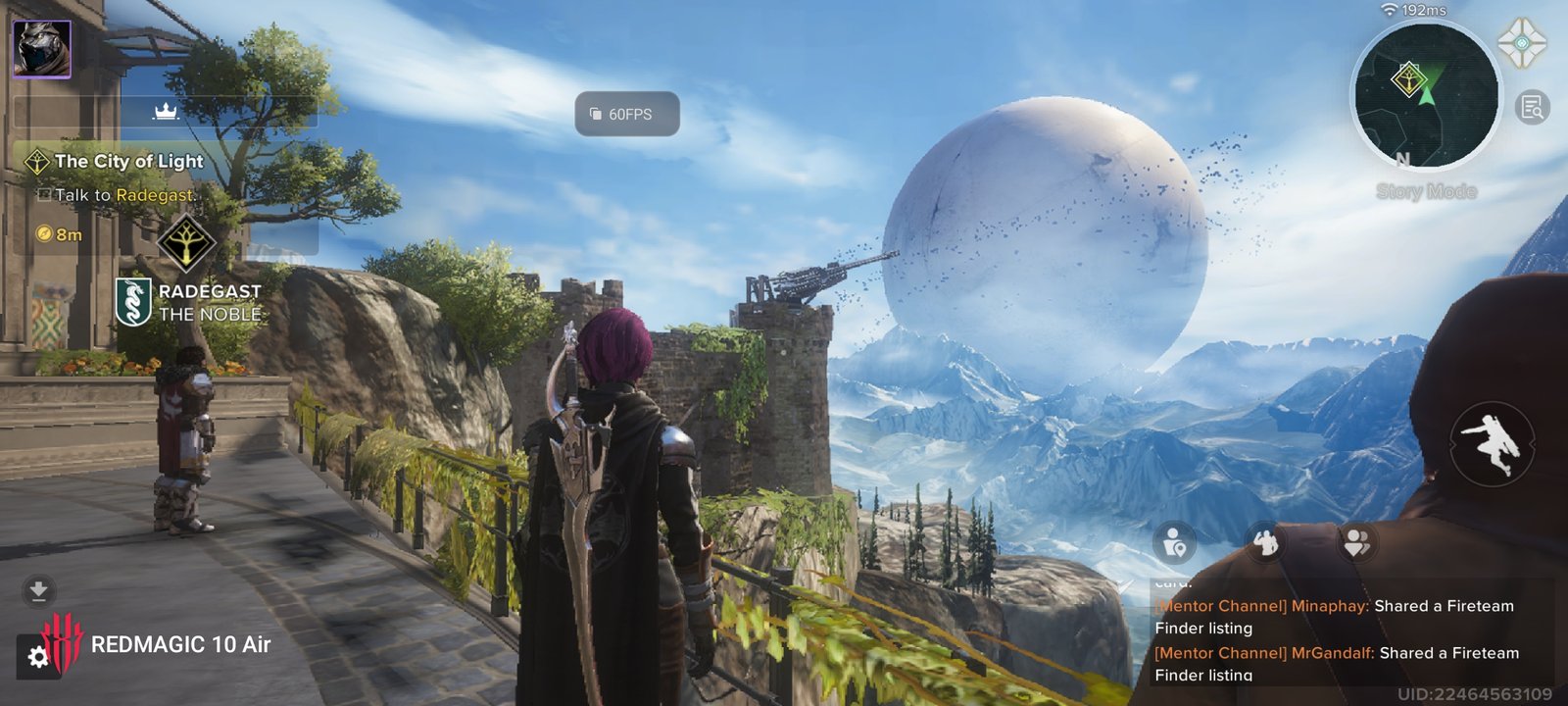
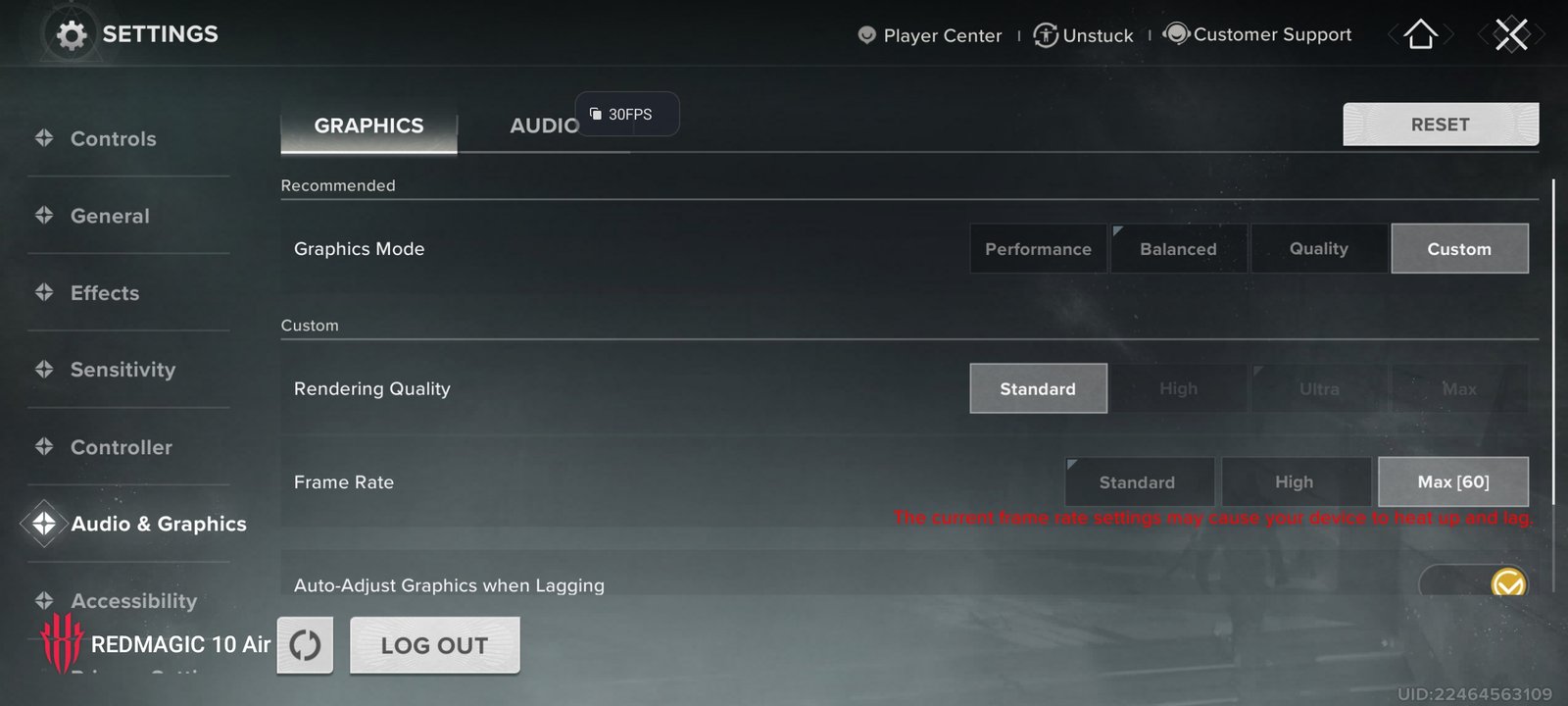
Destiny: Rising pushes devices with its demanding graphics and detailed environments, yet the RedMagic 10 Air performed reliably. In Quality Mode with rendering quality set to maximum, the phone managed a stable 30 FPS, producing detailed textures and smooth animations. Changing to Custom Mode with rendering quality at standard and frame rate at maximum raised performance to 60 FPS. This provided a more responsive experience during intense action scenes, without visible lag or overheating.
Delta Force Performance
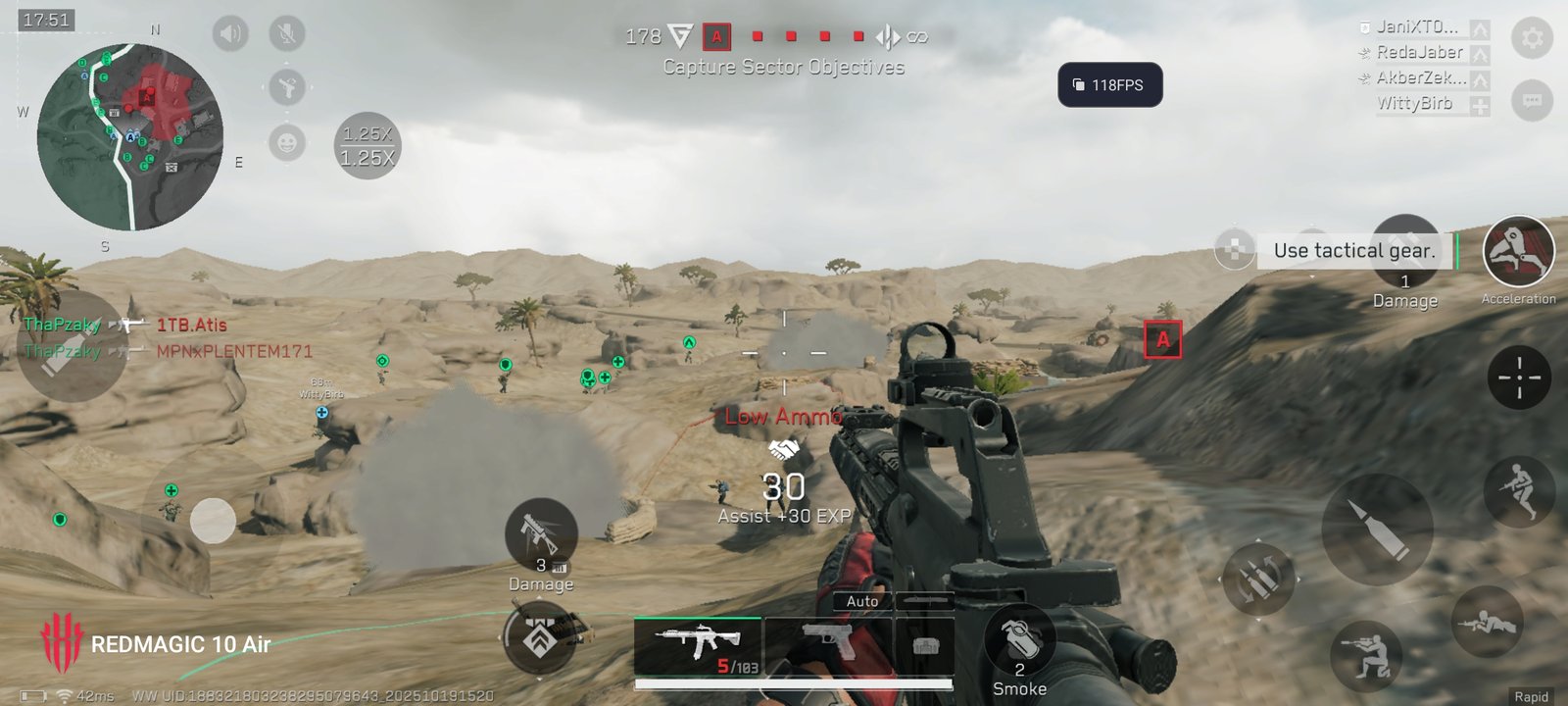
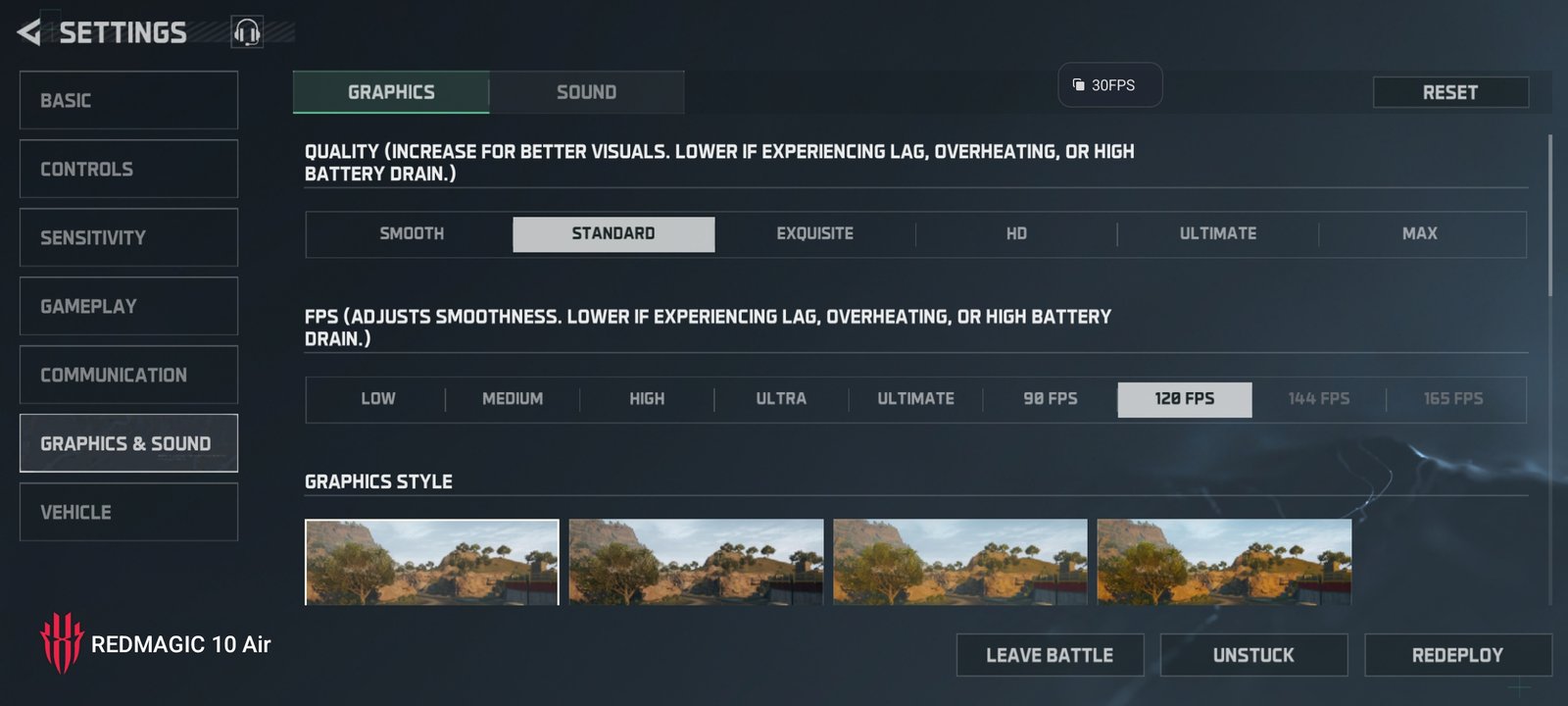
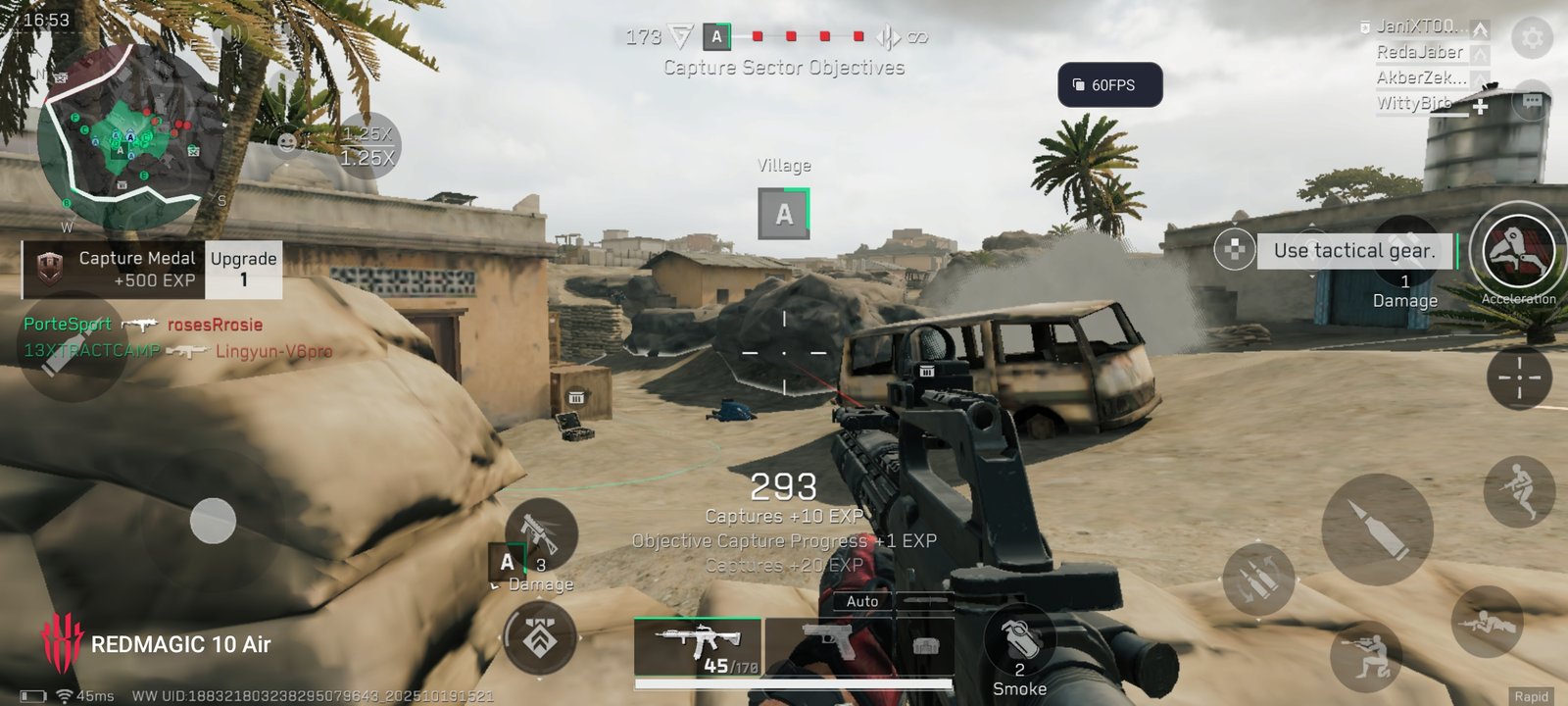

Delta Force is optimized for high-refresh-rate gameplay, and the RedMagic 10 Air makes full use of its 120Hz display. In Standard Quality mode with FPS capped at 120, the phone maintained 118 FPS consistently during extended sessions. When graphics quality was switched to HD + Ultimate, frame rates settled at 60 FPS while still offering enhanced visual sharpness and depth. The gameplay remained fluid, with no signs of throttling or input delay, showcasing how well the Snapdragon 8 Gen 3 and ICE-X cooling system work together.
Genshin Impact Performance

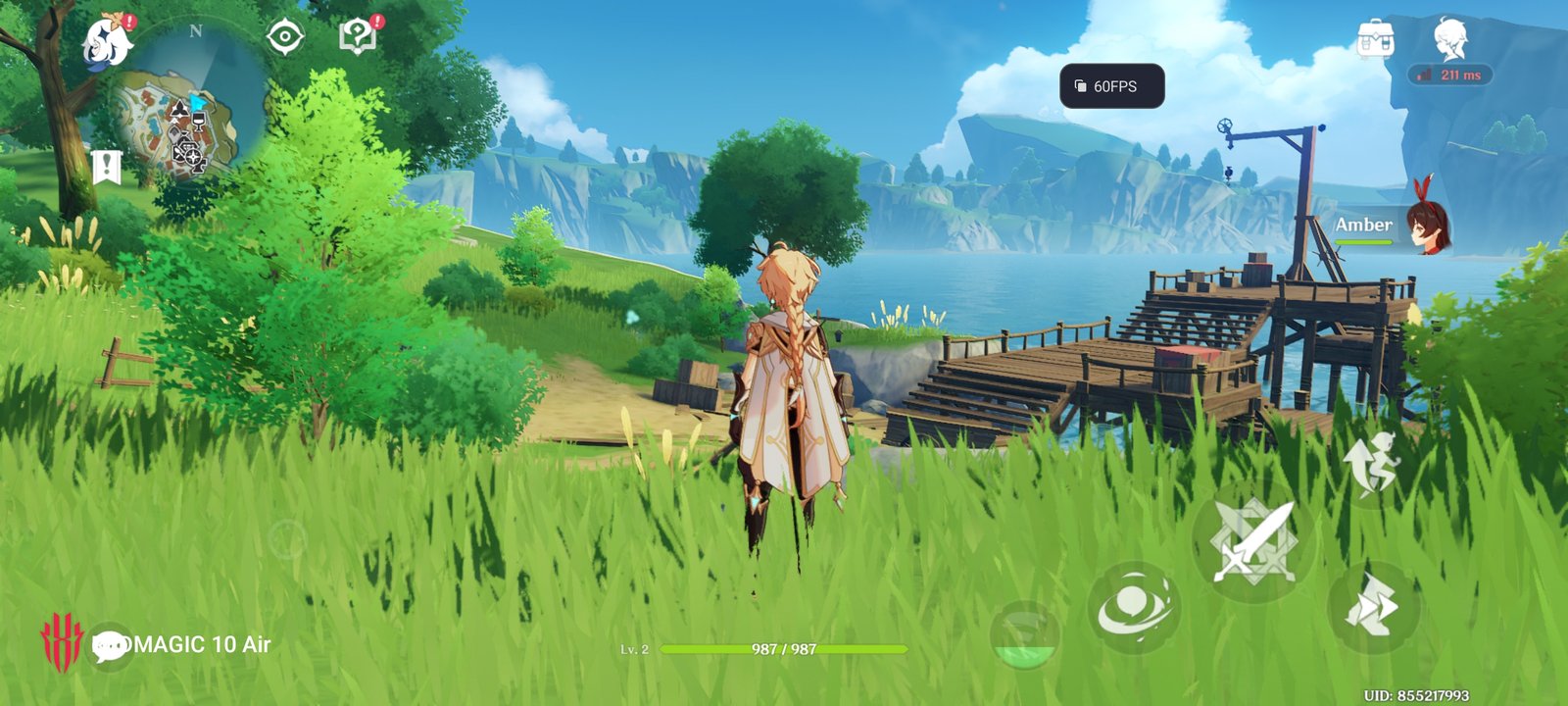
Genshin Impact is known for pushing mobile hardware due to its vast open-world design and complex particle effects. On the RedMagic 10 Air, gameplay at High settings delivered a stable 30 FPS with smooth transitions between areas. When increased to the Highest graphics quality and 60 FPS mode, the device maintained steady performance in most scenarios, even during heavy combat sequences. Minor frame dips occurred in highly populated areas, but overall, the phone managed to deliver a polished and enjoyable experience without significant heat buildup.
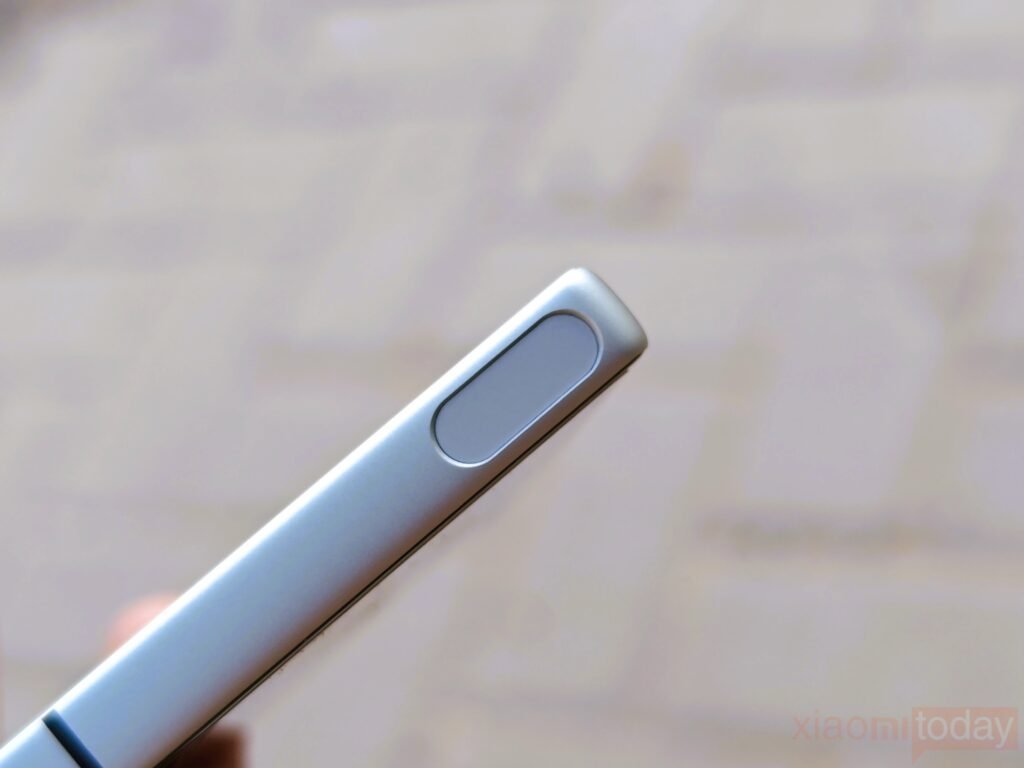
During gaming testing, we also used the shoulder buttons of the RedMagic 10 Air, which proved to be very practical in various titles. The built-in 520Hz shoulder triggers, enhanced with high-frequency touch technology, offer faster input response and better precision. In FPS and MOBA games, they allow players to perform quick combos, aim more accurately, and react faster in competitive situations. This gives the device a clear advantage for gamers who prefer tactile control without relying solely on the touchscreen.
In terms of temperature, the phone performed well under different conditions. During gaming at high graphics settings, the temperature peaked around 44°C, which is reasonable for extended sessions on demanding titles. On lower graphics settings, the temperature stayed around 39°C, keeping the device comfortable to hold even during longer playtime. When idle or during general use without gaming, the temperature averaged between 30°C and 33°C, showing that the cooling system effectively maintains stability across different workloads.

Throughout the tests, performance remained consistent, with no major drops or overheating issues. The combination of capable hardware, efficient cooling, and practical gaming features makes the RedMagic 10 Air a strong option for users seeking reliable gaming performance without paying for the highest-end flagship tier. It provides smooth gameplay, stable frame rates, and effective heat management, making it a dependable choice for both gaming and everyday use.
Overall, the RedMagic 10 Air delivers reliable performance across synthetic benchmarks and real-world gaming. The Snapdragon 8 Gen 3 processor, efficient cooling system, and fast storage contribute to a balanced experience suitable for gaming, multitasking, and everyday use without major compromises.
REDMAGIC 10.0 OS Based on Android 15
The RedMagic 10 Air ships with REDMAGIC OS 10.0, based on Android 15, offering a clean and efficient user experience. The interface feels quick and responsive, keeping the balance between performance and visual appeal. Navigation is smooth, and the layout maintains the familiarity of Android while adding Nubia’s unique gaming-focused features. The system is designed for customization, letting users modify themes, icons, and wallpapers with ease.

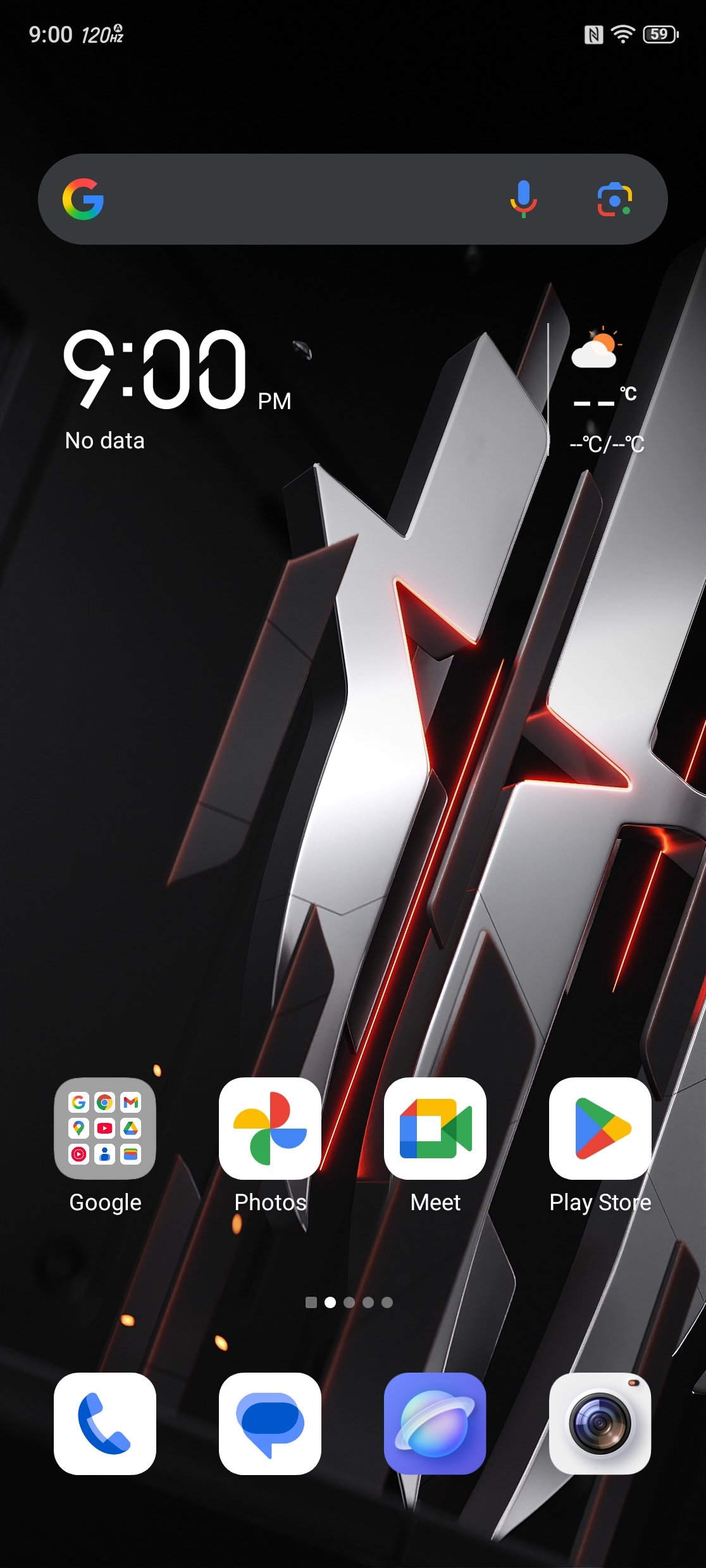

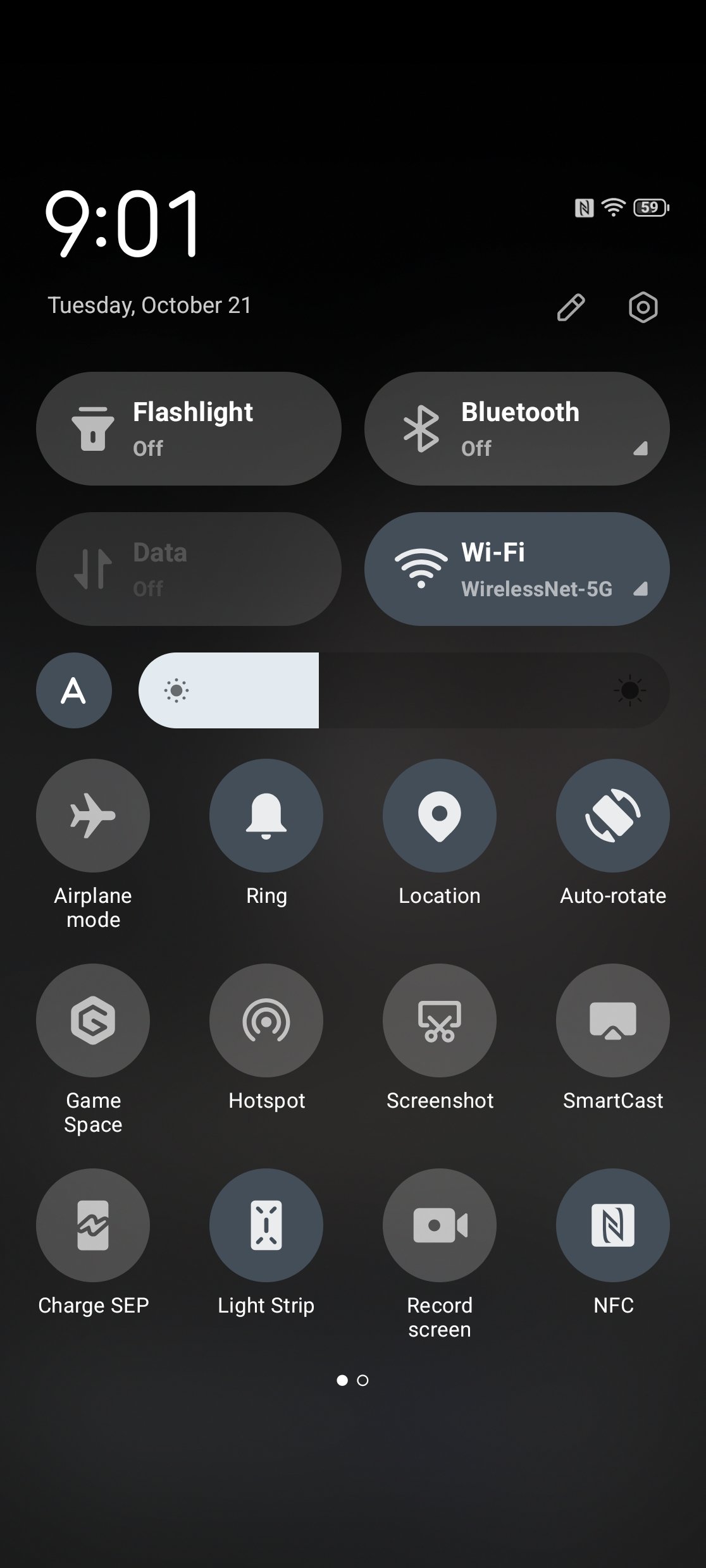
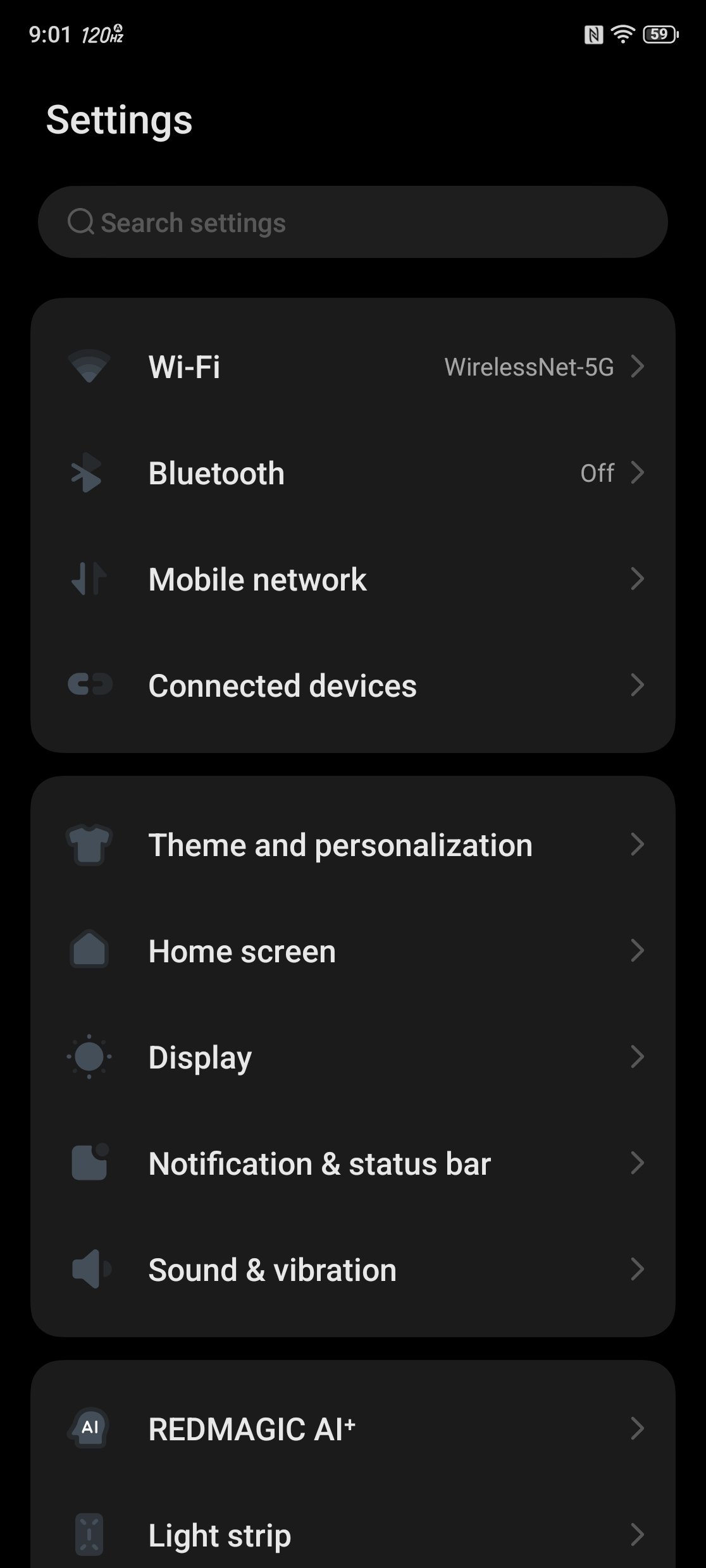
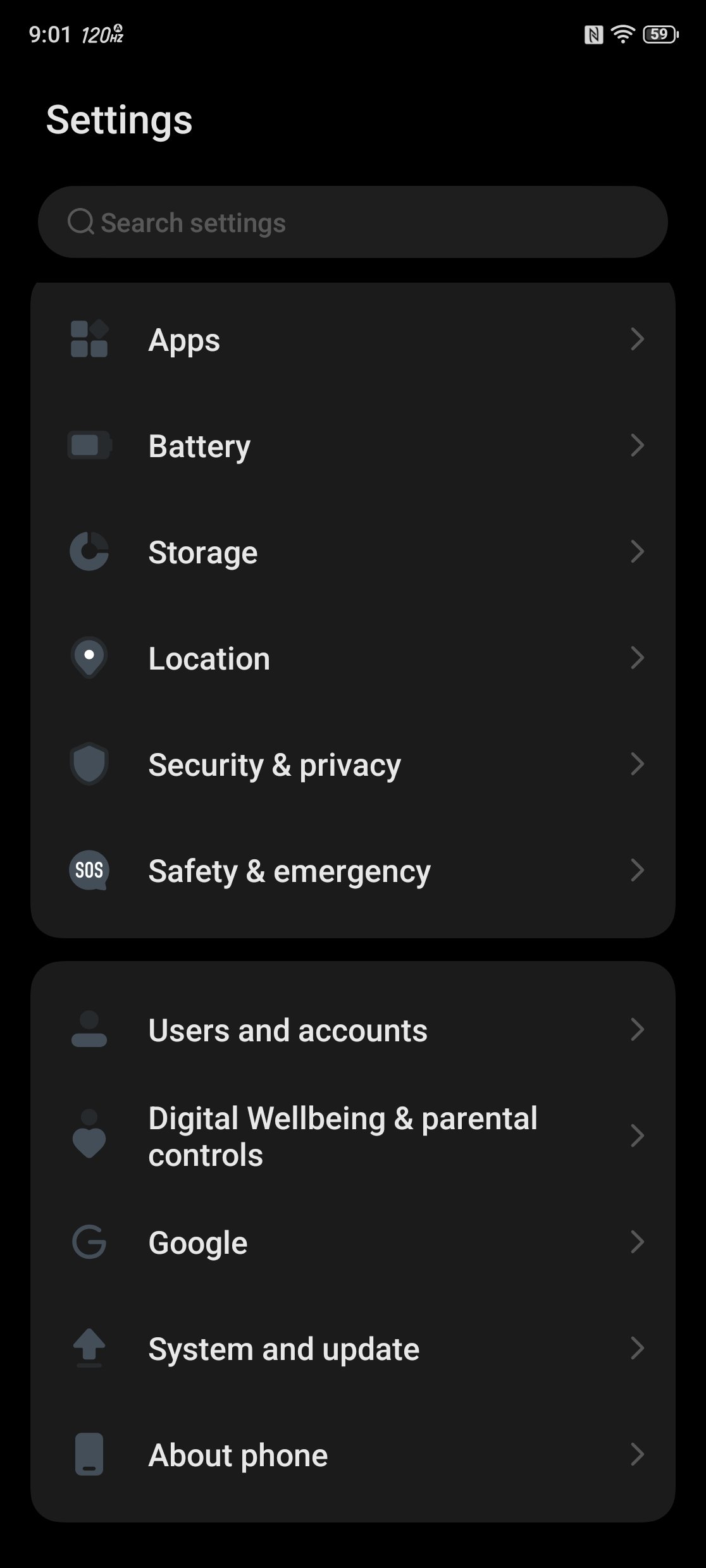
Unlike many custom Android versions, REDMAGIC OS keeps pre-installed applications to a minimum. You’ll find only essential tools such as Game Space, performance optimization, and a built-in screen recorder. This results in a cleaner setup with no unnecessary software slowing the system down. The company promises two years of major Android updates and three years of security patches, which ensures longer usability for the device.
GameSpace
The most noticeable part of REDMAGIC OS 10.0 is its strong focus on gaming control and flexibility. Each game can be individually configured, allowing users to fine-tune performance, display refresh rate, and touch response. The in-game overlay provides instant access to key performance information, including CPU and GPU frequencies, frame rate, and system temperature. Its symmetrical layout keeps everything organized and easy to reach during gameplay. Players can adjust graphics or cooling settings on the fly without having to leave their game session.

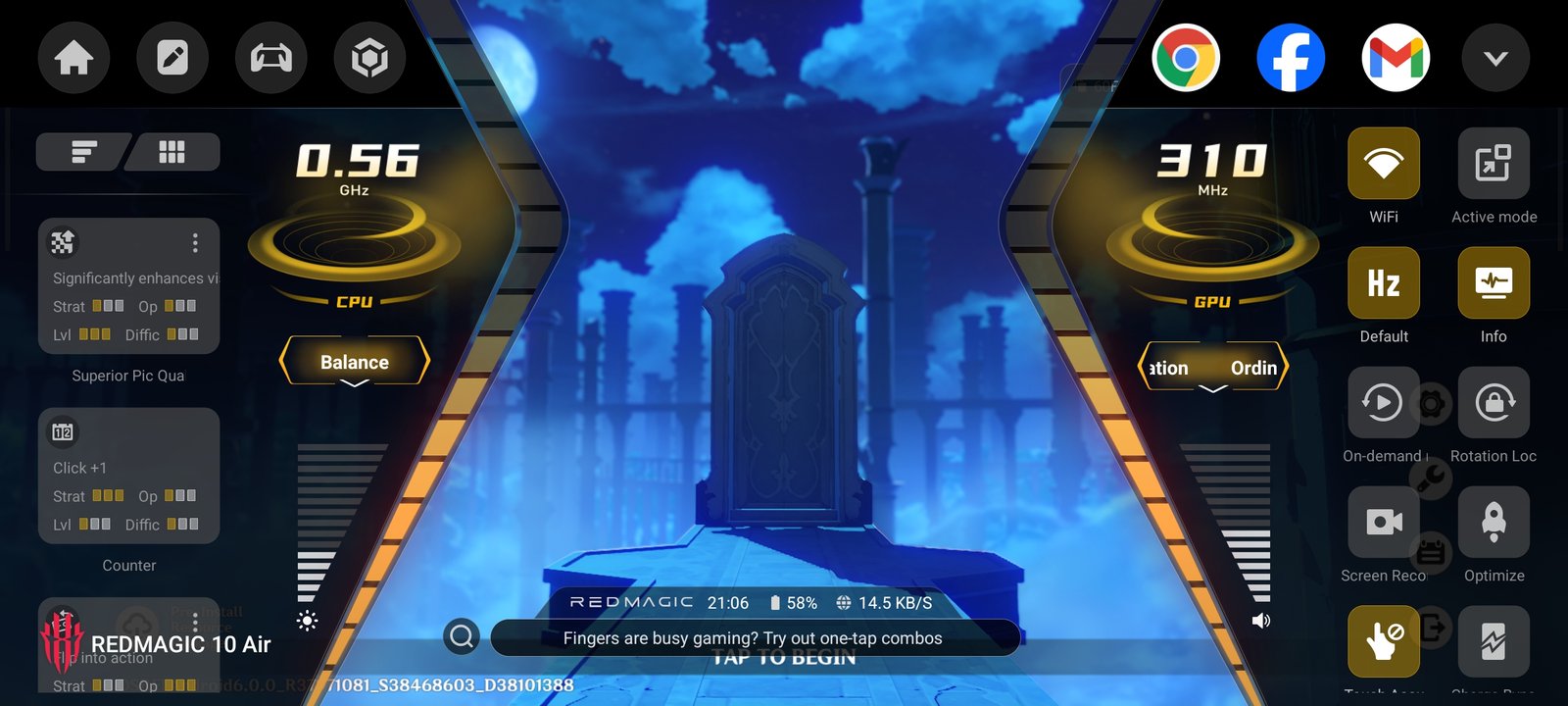
The Gravity-X feature adds more versatility by enabling wireless game streaming. It allows users to mirror games from the RedMagic 10 Air to larger screens or stream content from other devices to the phone. X Gravity further improves the gaming setup by supporting external peripherals. Players can map controls for gamepads, keyboards, and mice, which enhances accuracy in fast-paced titles and gives a more console-like experience.


For those who take competitive play seriously, additional features bring practical advantages. Tools like Auxiliary Line and AI Trigger assist in improving control and response time. They can highlight specific in-game elements or automate certain actions, such as reloading or activating abilities. The Crosshair overlay even allows zooming in on precise areas, which can help in aiming during first-person shooters.
Camera Performance
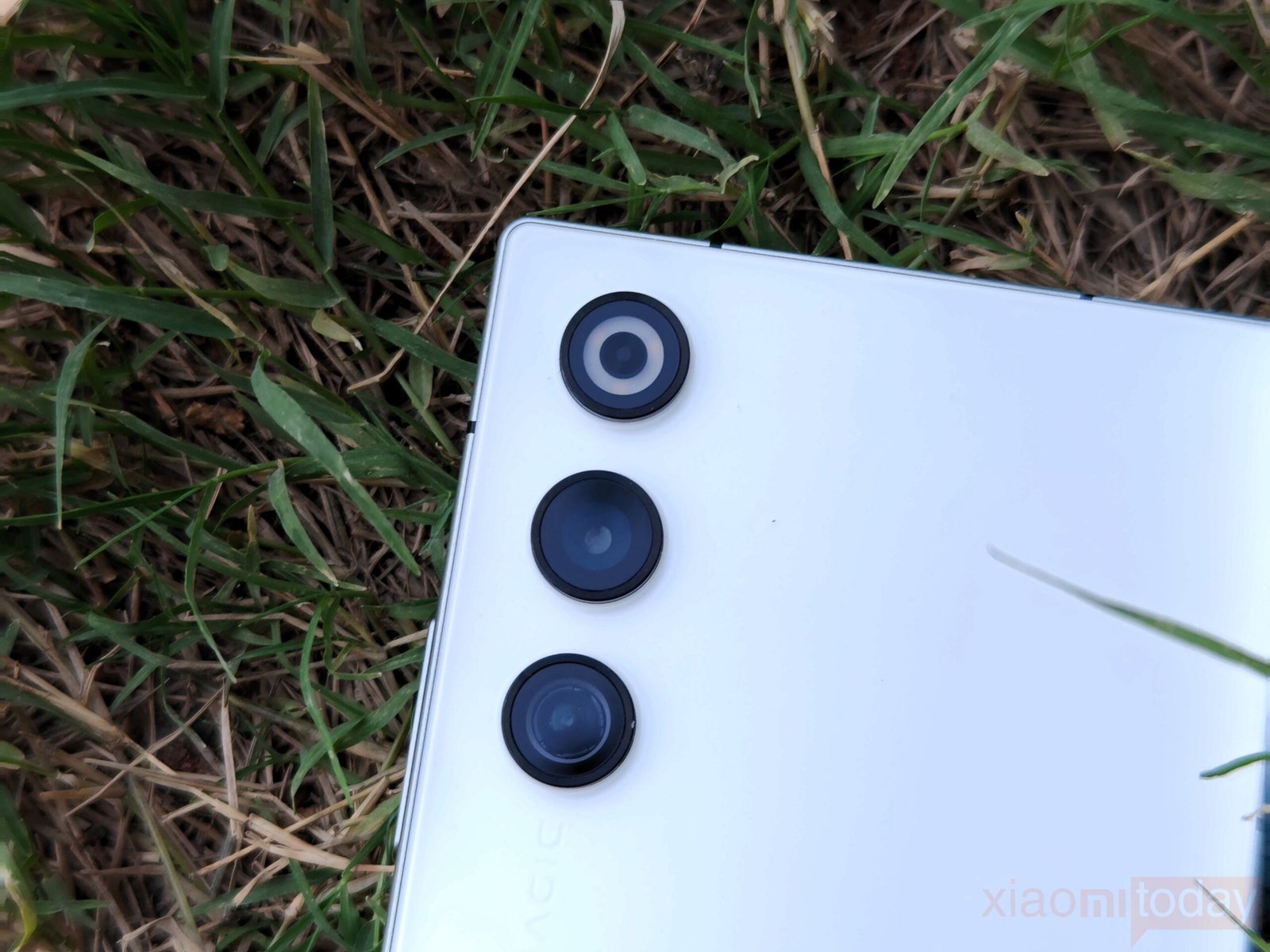
Almost all gaming smartphones, regardless of price, share a similar weakness — the camera. The REDMAGIC 10 Air follows the same pattern. While it offers capable sensors, the overall imaging experience remains secondary compared to its gaming-focused features. The phone includes two 50-megapixel cameras on the back, identical to the setup found on the RedMagic 10 Pro, minus the 2MP macro lens, which isn’t a major loss for most users.
- Main Camera: 50MP (Omnivision OV50E), f/1.88, OIS
- Ultra-Wide Angle: 50MP (Omnivision OV50D)
- Front Camera: 16MP (OmniVision OV16EQ), f/2.0, under-display
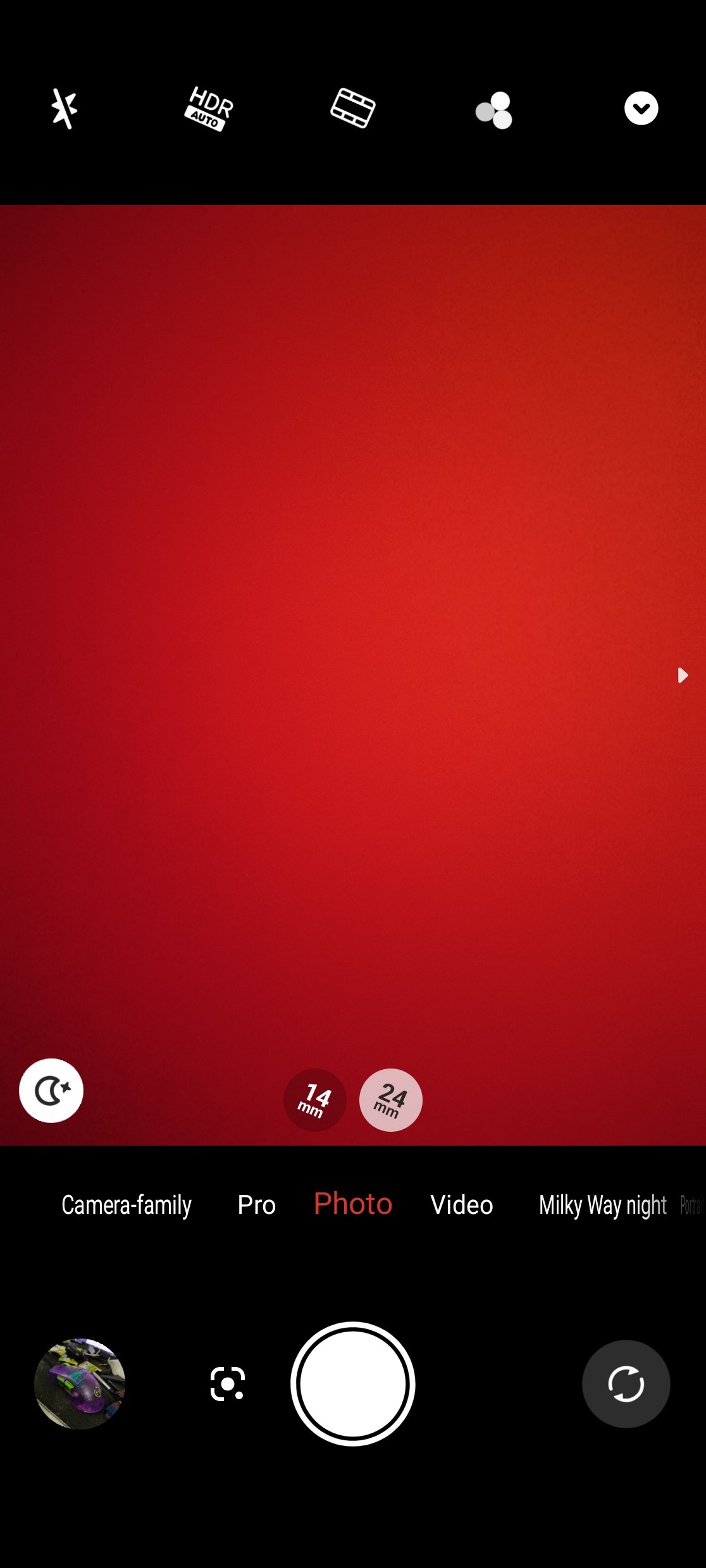
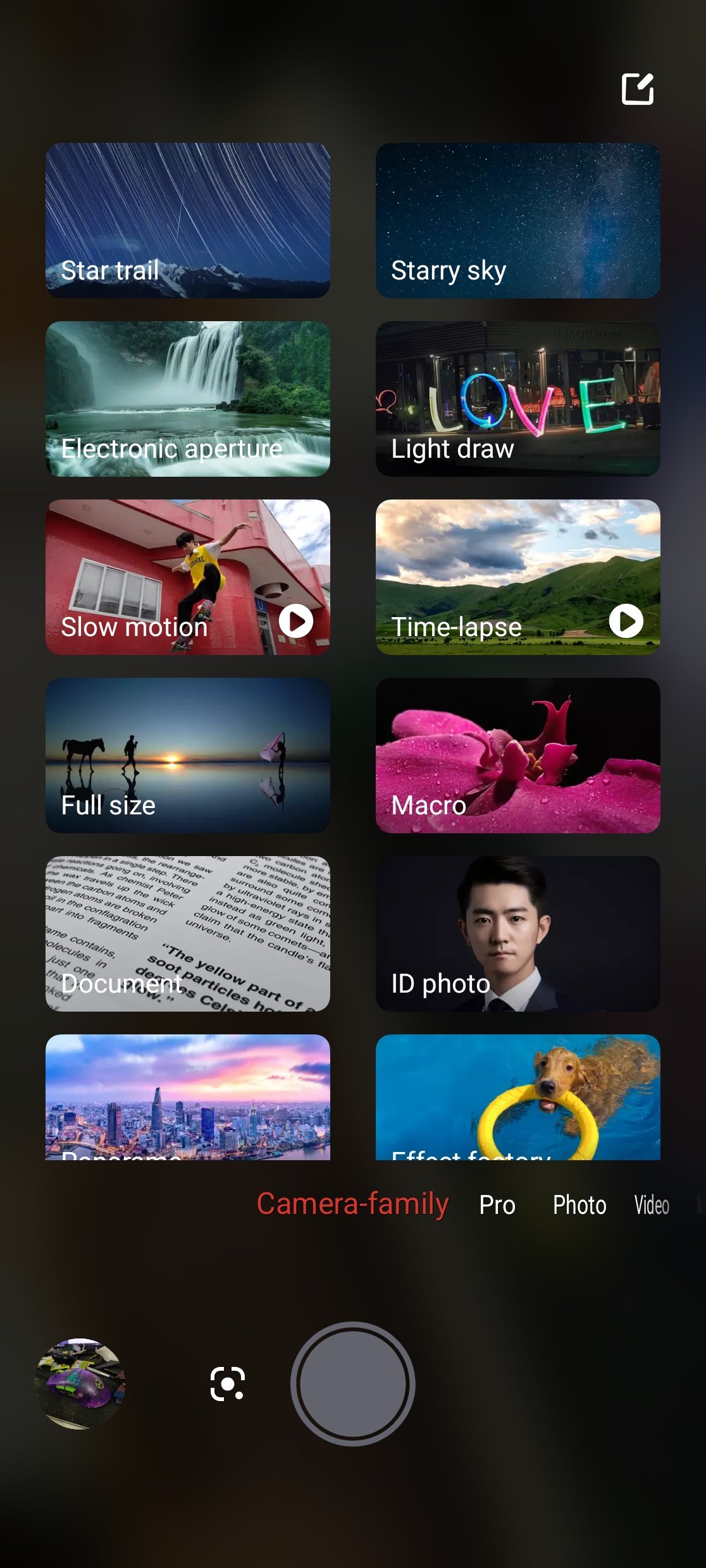
The REDMAGIC 10 Air includes a wide range of camera modes, conveniently placed in the “camera family” section of the app. Options such as star trails, moon photography, light painting, slow motion, macro, and even multi-camera shooting add variety to the experience. While these modes may not be used daily, they bring creative flexibility when inspiration strikes. Whether experimenting with long exposures or capturing fine details up close, these tools make mobile photography more enjoyable.
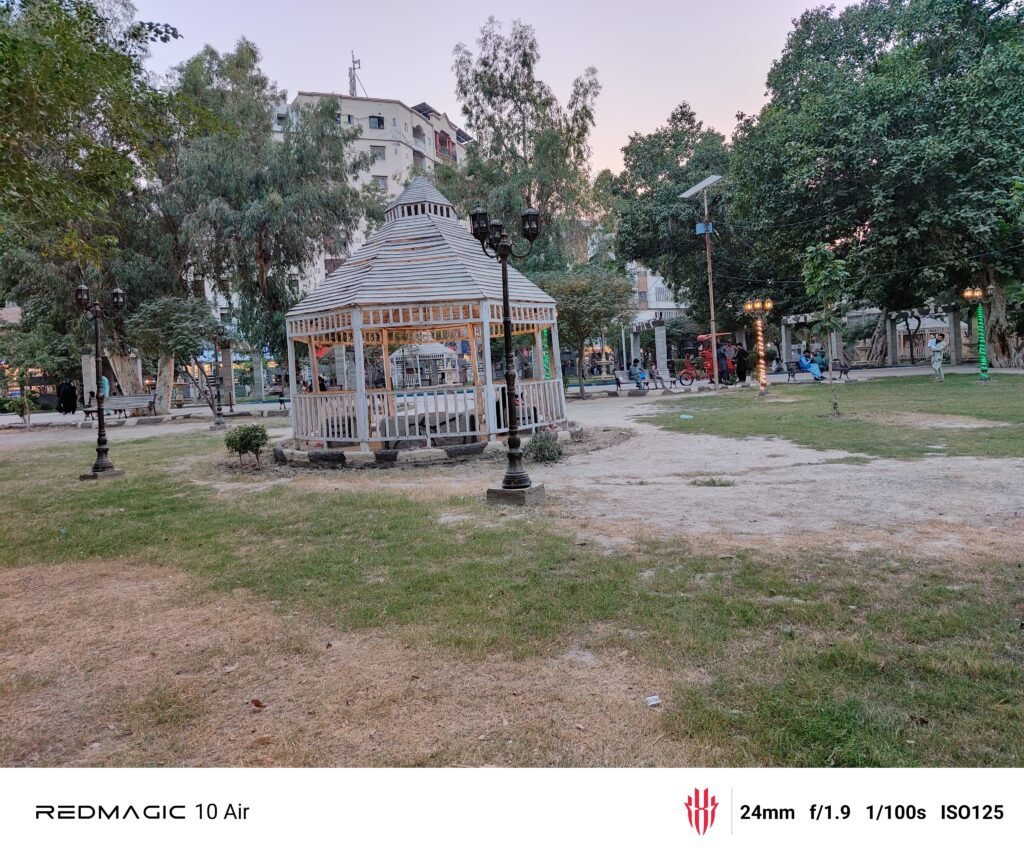




In daylight, the main camera captures solid photos with good clarity and a decent dynamic range. Images appear sharp enough for everyday use, and colors are lively, although they tend to look a bit oversaturated compared to real life. This enhancement gives photos a pleasing punch but takes away from their natural tone. Fine details in the background can look slightly washed out, and close-up shots show a narrow focus area that makes depth of field more noticeable.
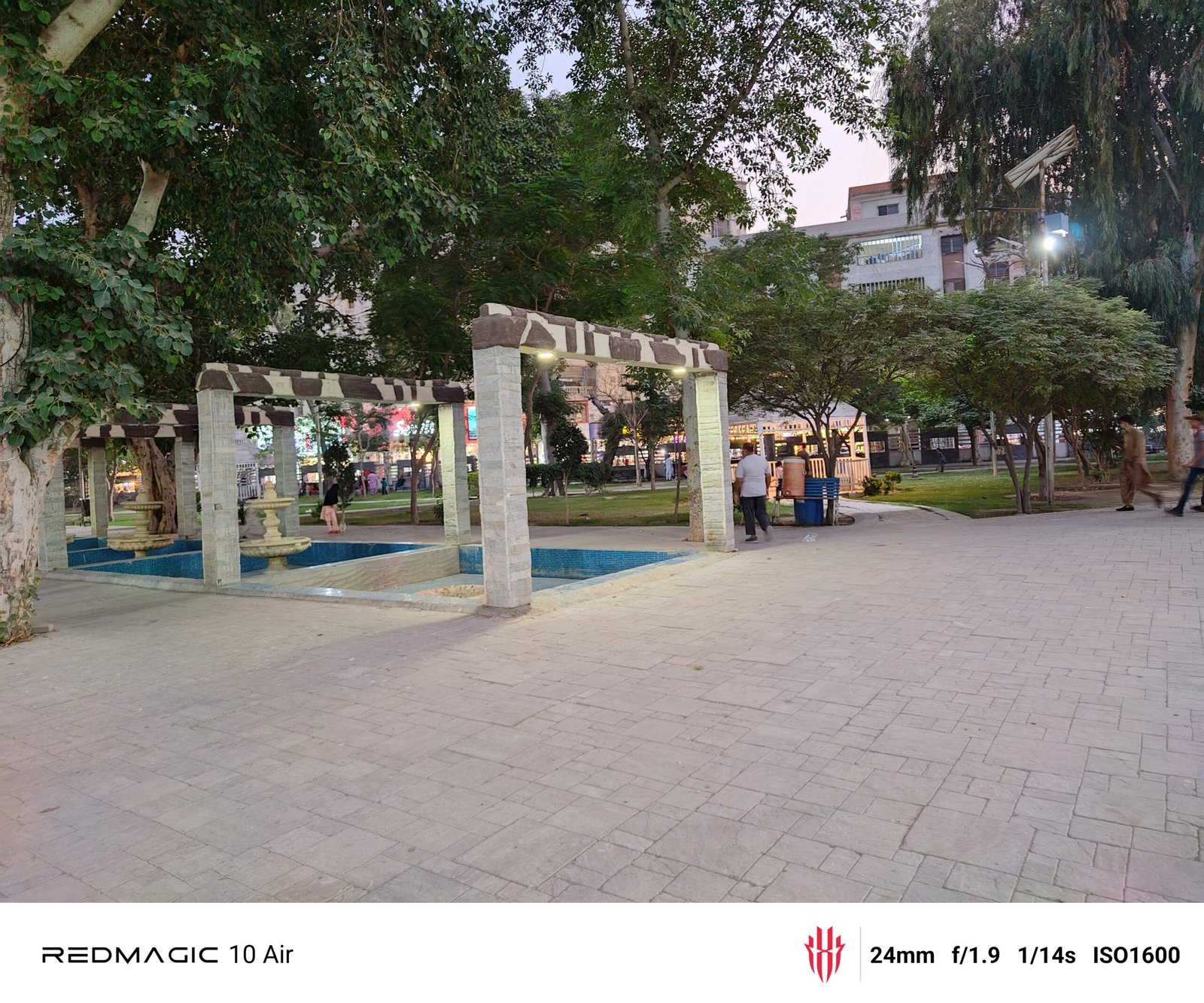
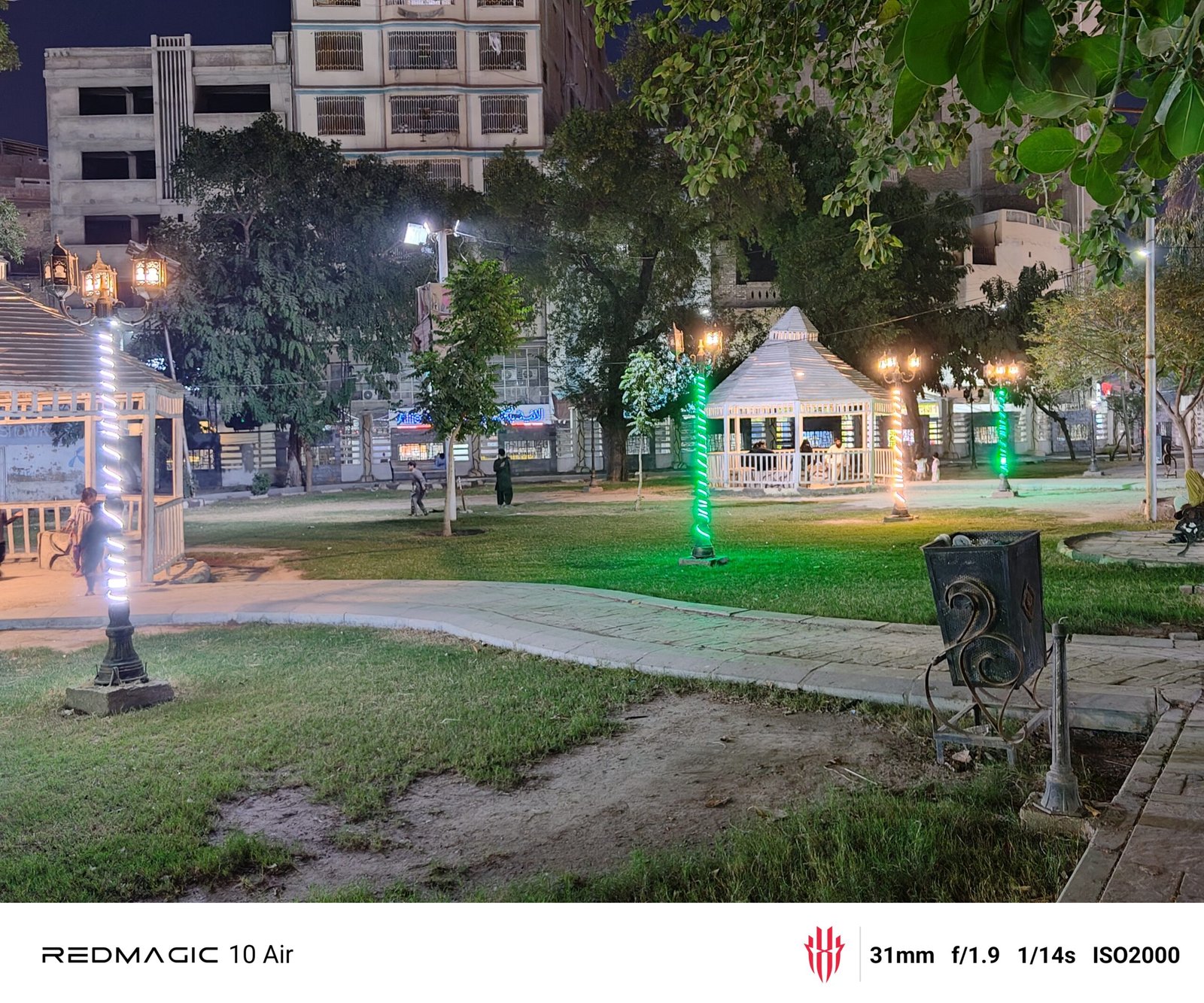
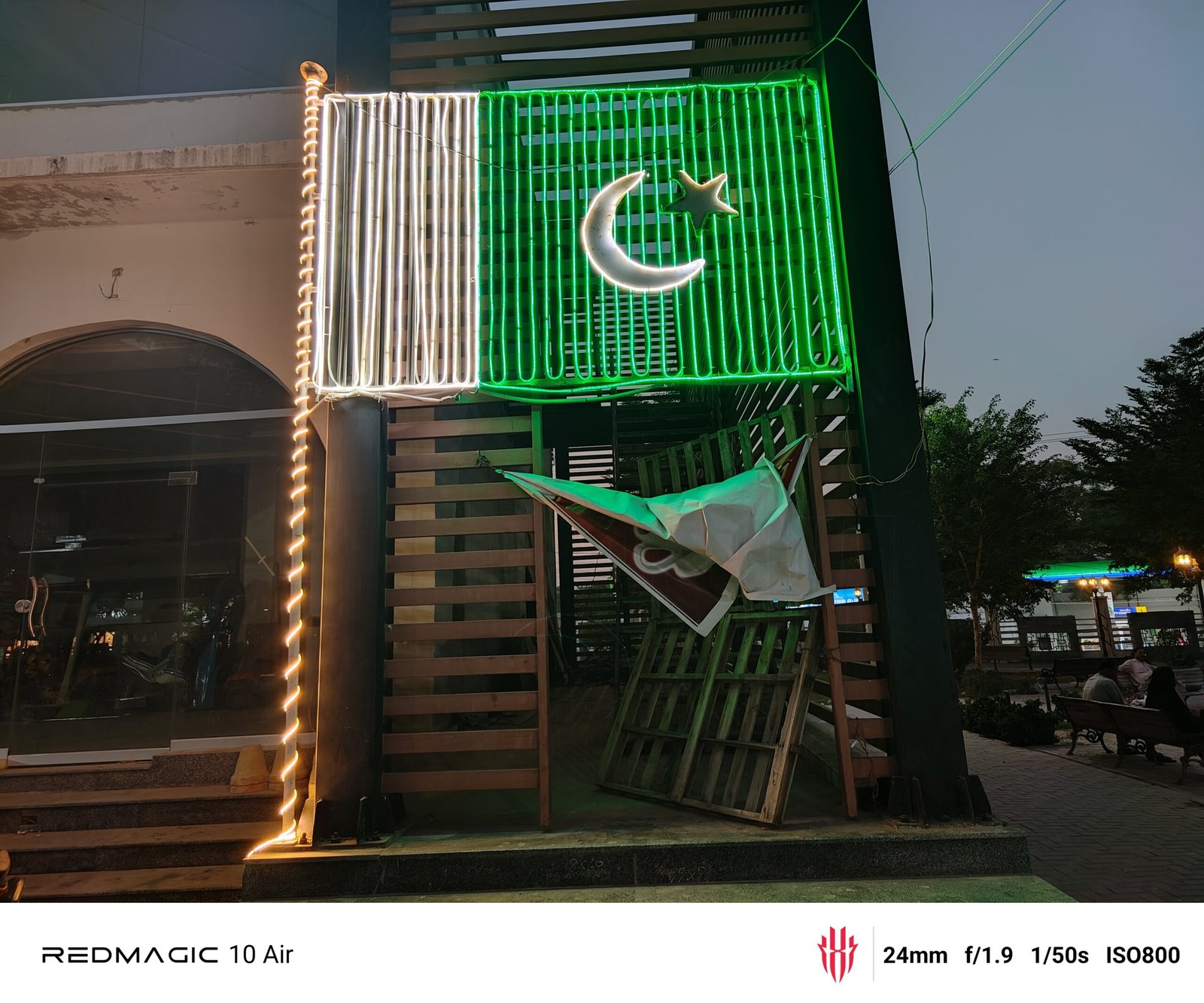

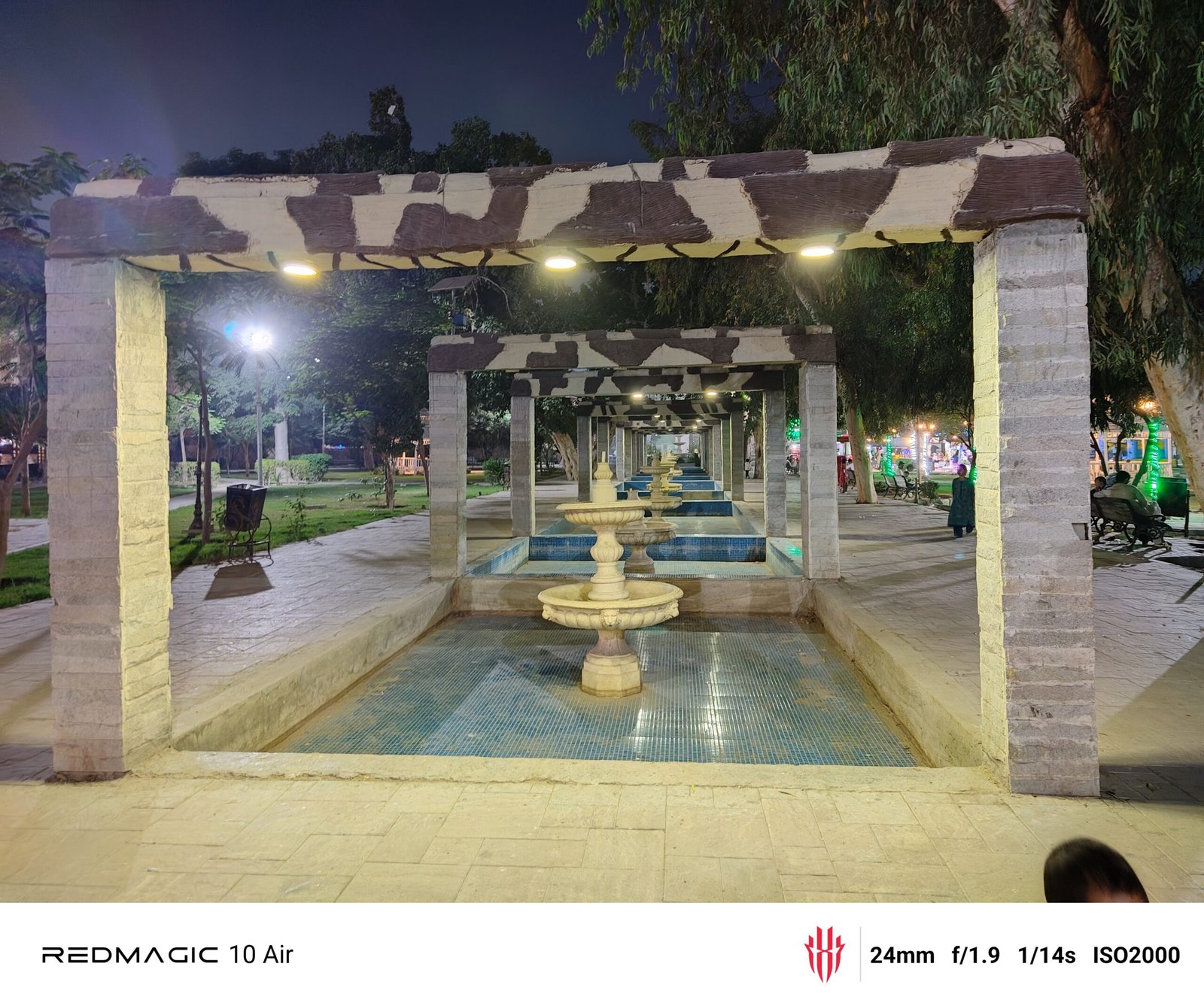
At night, the dedicated night mode activates automatically, brightening images and balancing the contrast within a short delay. The improvement is clear when compared to photos taken without the mode, as brightness and dynamic range are visibly enhanced. However, certain light sources are often overexposed, and fine details are not preserved as well as on traditional flagship devices. Noise handling is fairly controlled, ensuring dark areas remain clean, though textures appear softened.

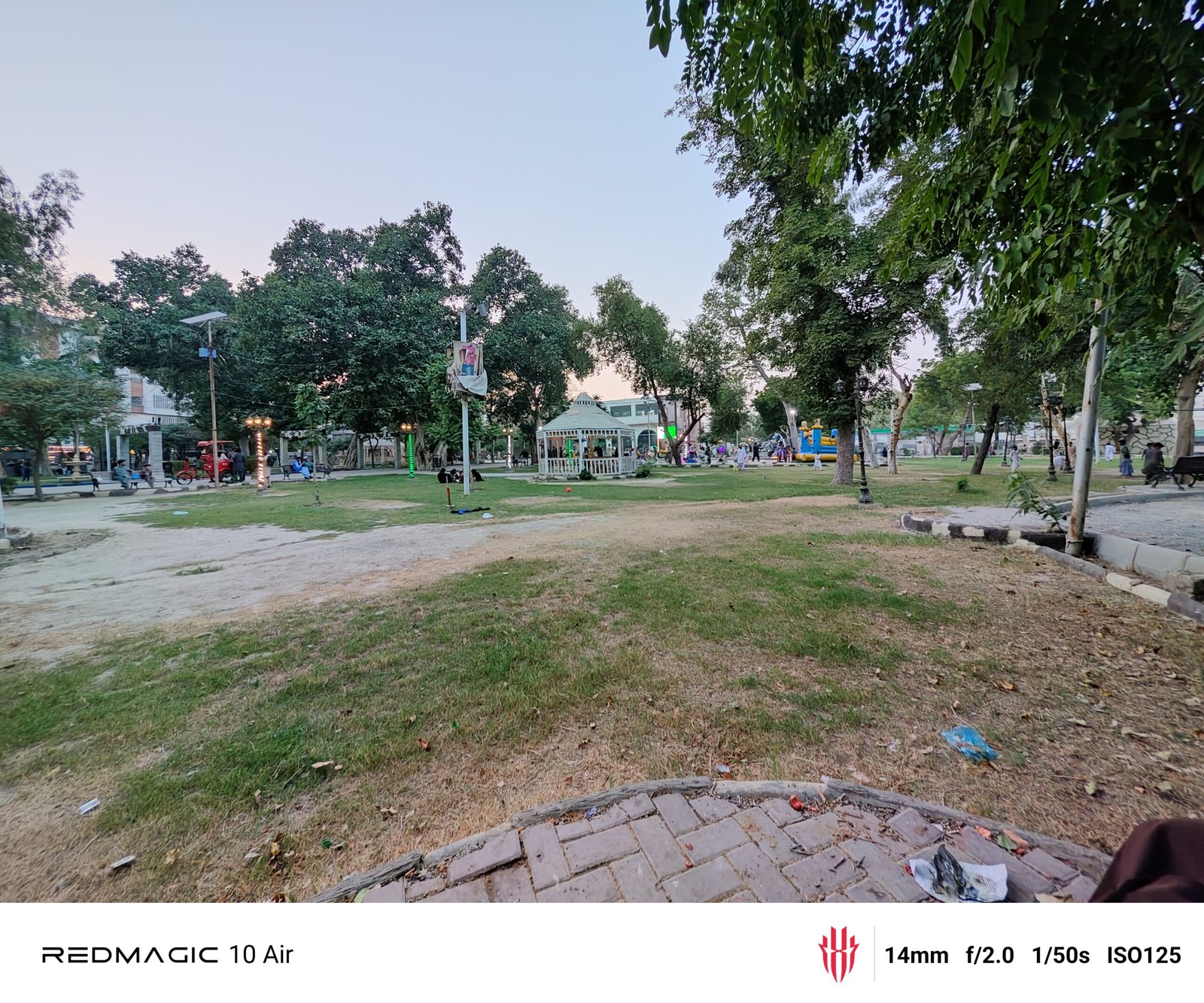
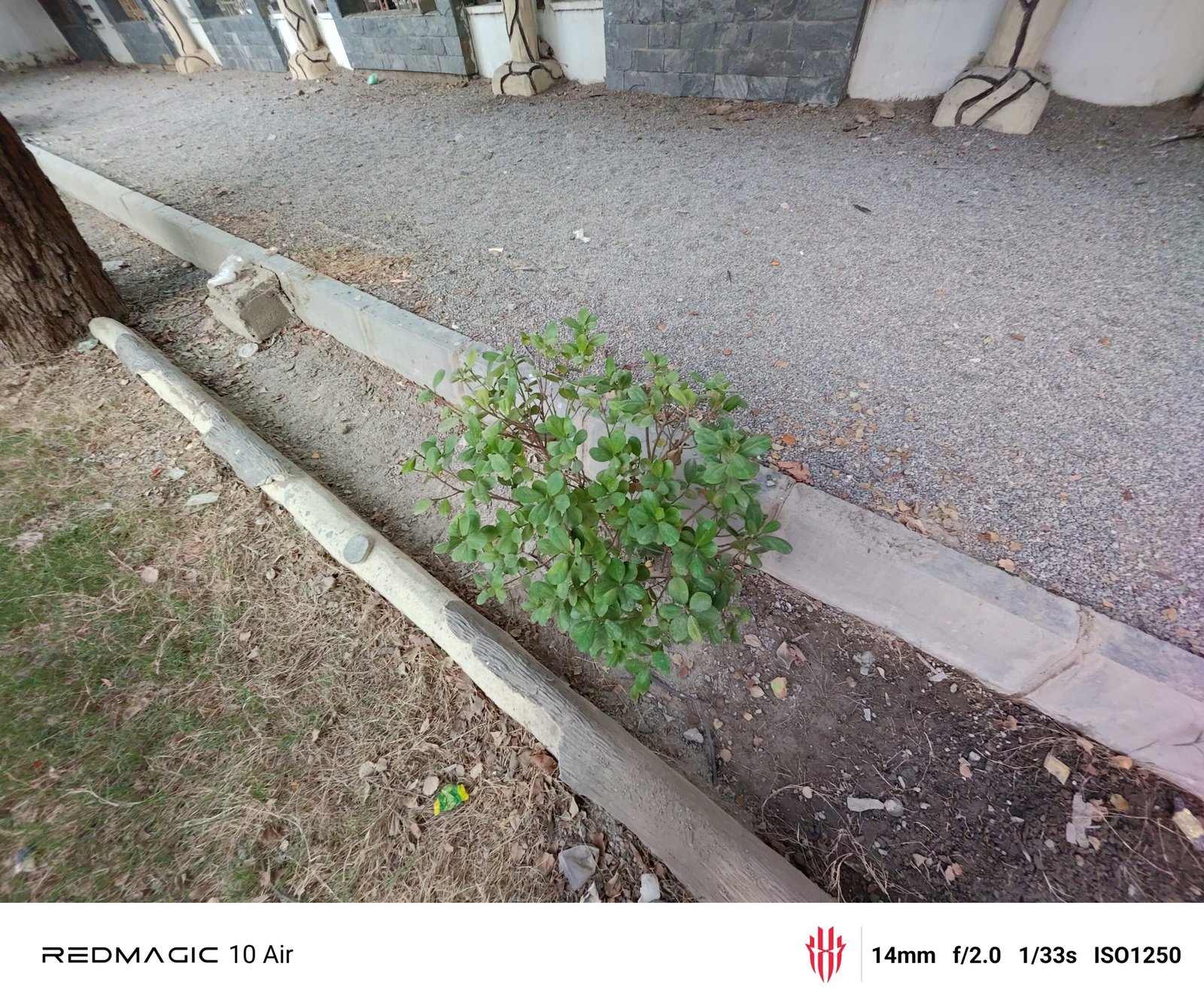
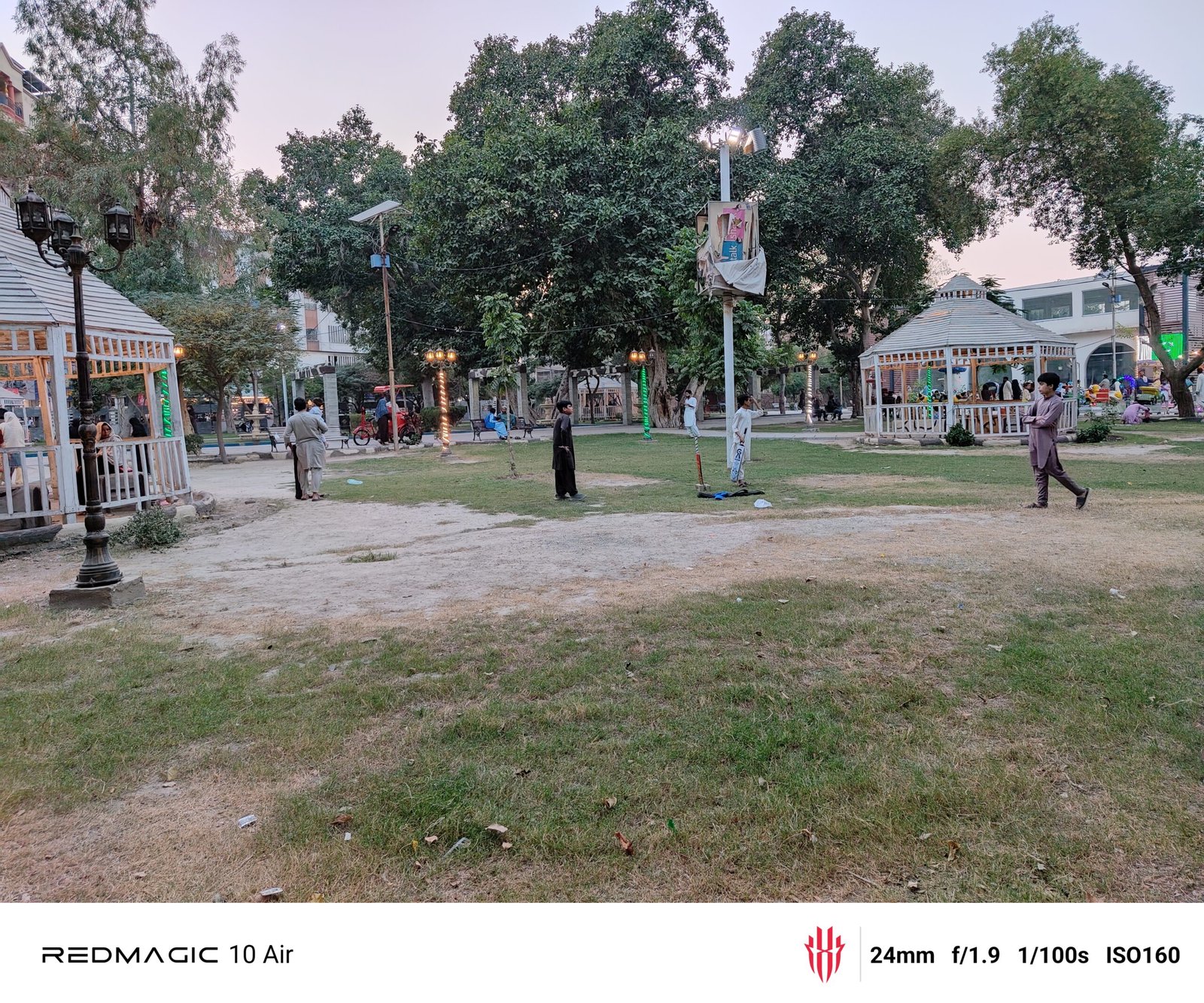


The ultra-wide-angle lens shows the most visible compromises. The photos it produces are noticeably darker and softer, with blurry edges and inconsistent exposure across the frame. Dynamic range is limited, and colors can shift depending on the lighting. When using the night mode, the ultra-wide shots become brighter but remain short on detail and show muted tones. Overall, the ultra-wide performance is acceptable for casual use but lacks refinement.





Portrait mode also struggles to impress. Background separation is hit or miss, and the artificial blur effect doesn’t always blend naturally. Edge detection errors are frequent, and the subject’s outline can appear rough. While the central subject stays sharp enough, the level of fine detail isn’t on par with what many mid-range competitors achieve.


The 16MP under-display front camera is well integrated, allowing for an uninterrupted full-screen display without a visible punch hole or notch. Selfies come out serviceable under good light but lack the clarity and consistency of dedicated front cameras found on non-gaming phones. Exposure can fluctuate depending on sunlight, leading to uneven results. However, users who value display symmetry will likely appreciate this design tradeoff.
Video recording supports up to 8K at 30 frames per second, though at this resolution, stabilization is limited and footage appears darker. At 4K 60fps, videos look sharper and more stable, thanks to the optical image stabilization on the main camera. Switching between lenses during recording isn’t supported. The audio captured through the three microphones sounds clear enough for dialogue, though it’s sensitive to wind interference. The front camera records at 1080p 30fps, suitable for quick clips or casual use.
Battery & Charging
The Redmagic 10 Air comes equipped with a 6,000mAh battery, giving it enough power to handle long hours of gaming or everyday use without frequent charging. While it’s smaller than the 7,050mAh battery found in the 10 Pro, it still provides solid endurance since the Air doesn’t need to power internal cooling fans. In battery testing, the phone achieved 10 hours and 8 minutes in the PCMark benchmark, which is on par with what we’ve seen from other recent Redmagic models. The 9S Pro and 9 Pro delivered similar results, so the 10 Air’s performance is consistent within the lineup. It’s not a record-breaking result, but it’s reliable enough for extended use.
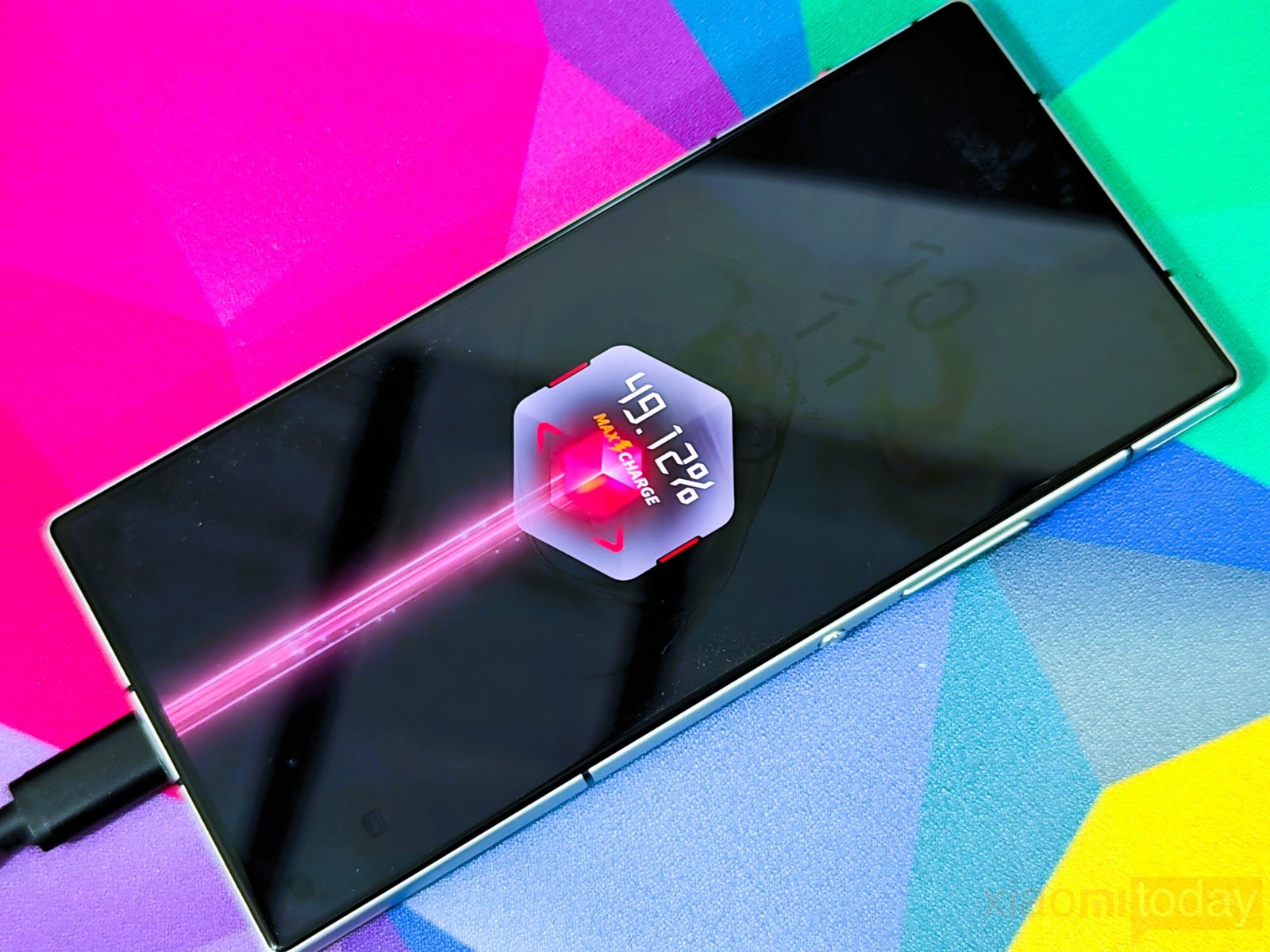
When used for gaming, battery drain naturally increases depending on the game type, screen brightness, and network usage. During continuous gameplay, you can expect around five to six hours of active playtime before needing to recharge. For lighter use, such as browsing, social media, and messaging, the phone easily lasts through a full day and can even stretch to a day and a half before reaching low battery levels. Charging speeds are a major strength for the Redmagic 10 Air. The 80W wired fast charging support allows the phone to recharge from empty to full in just over 40 minutes using the included charger. Even a short top-up of 15 to 20 minutes provides enough charge for several hours of use, which is great for those who don’t want to wait long between gaming sessions.
There’s no wireless charging support, which may disappoint some users, but this omission keeps the focus on fast wired charging. Redmagic continues to prioritize efficiency and practicality, and the 10 Air delivers dependable battery life paired with excellent charging performance.



